Trees are often seen as representative of human life – their roots, anchored to the earth, strive to provide the strength and the foundation so they can grow, just as we sometimes struggle to grow where we are planted. Their trunks and branches reach towards the life-giving light, just as we reach for the things we desire from life – wisdom, wealth, health and happiness. And trees have the opportunity to remake themselves each spring when new branches and leaves appear – we often remake ourselves as well.
Be like a tree.
Stay grounded.
Connect with your roots.
Turn over a new leaf.
Bend before you break.
Enjoy your unique natural beauty.
Keep growing.
– Joanne Raptis
Day 1 – Treehugger
Treeline | What is a Tree?
The Secret Lives of Trees
PBS Science Trek: Trees
How a Tree Grows
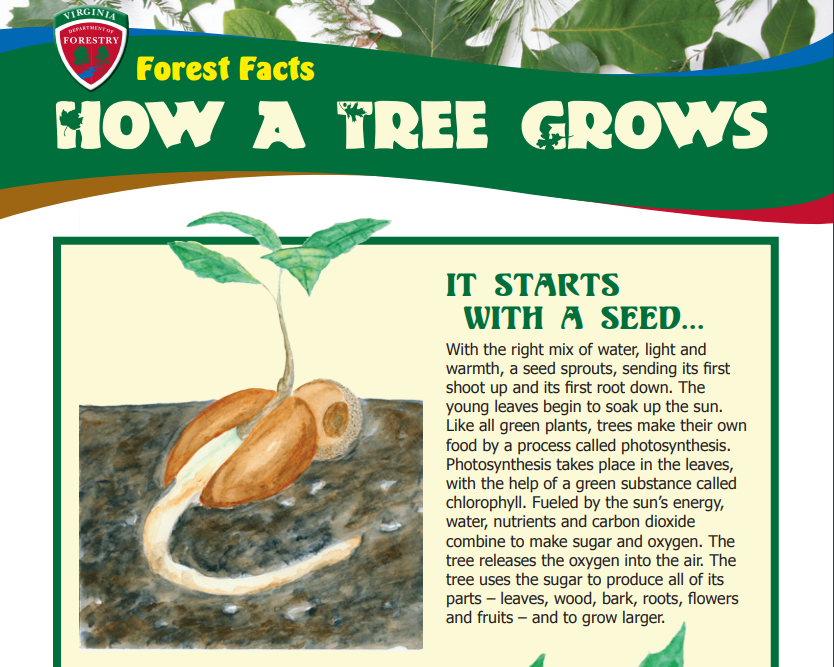
How Trees Grow
How Do Trees Grow? – Kids STEM
What Trees Teach Us
What trees teach us about life and happiness
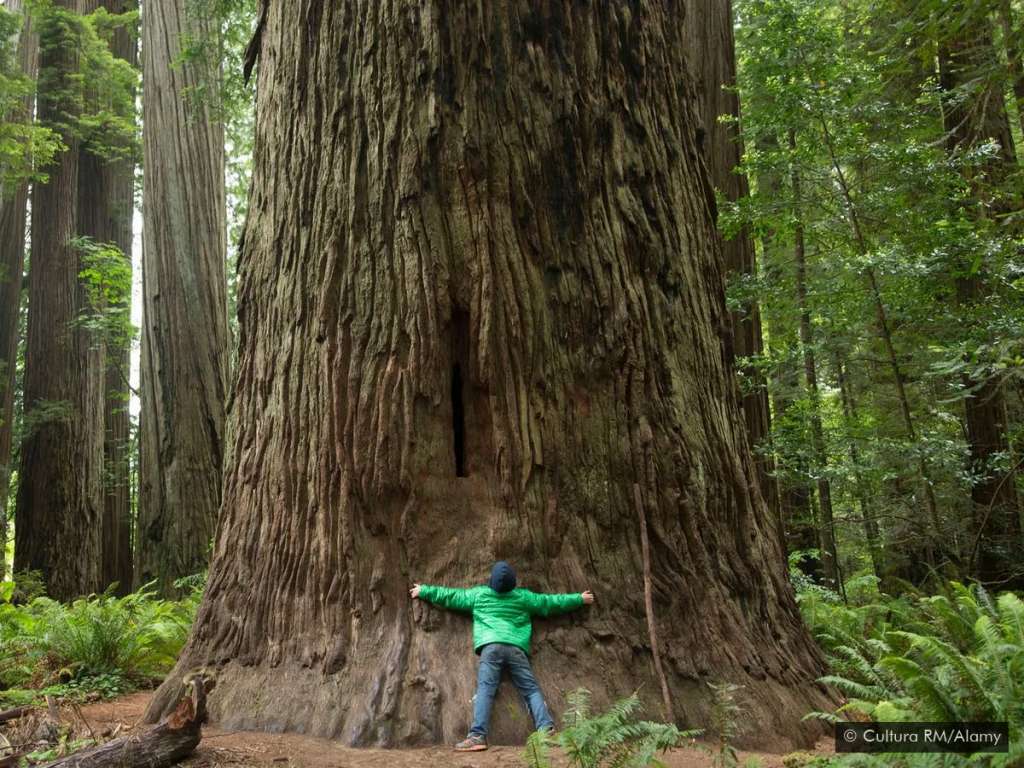
A beautiful animation of Philip Larkin’s The Trees
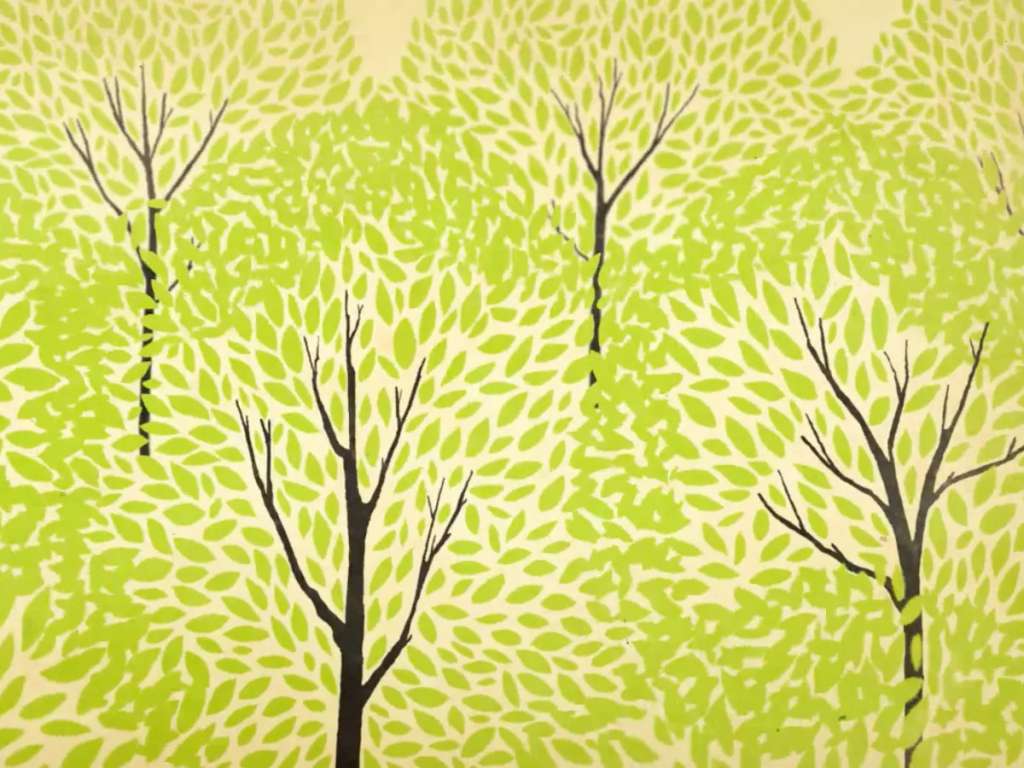
Famous Trees
10 Most Famous Trees in the World
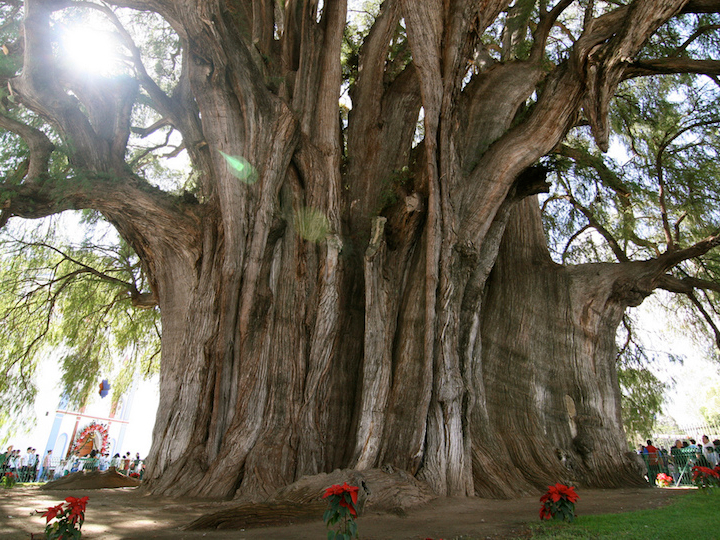
15 of the World’s Most Famous Trees
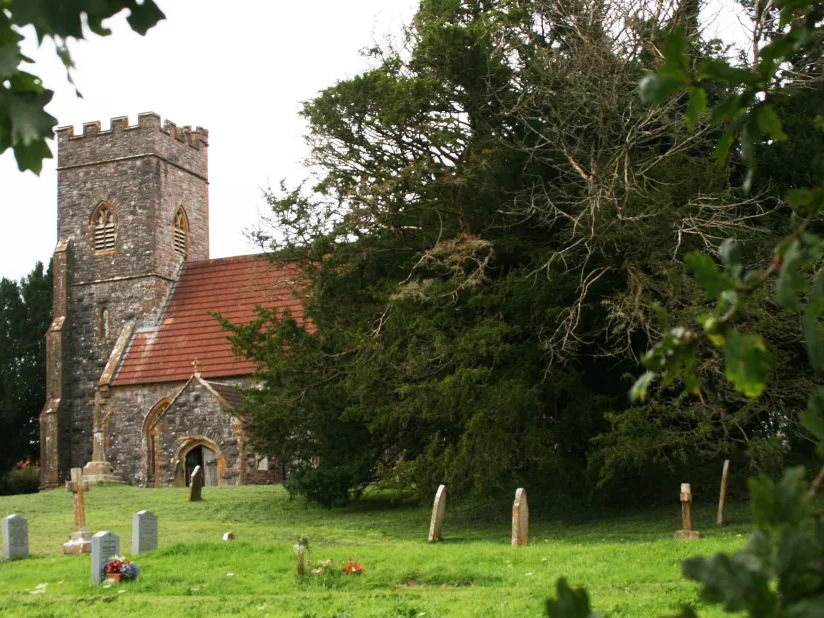
Dendrochronology
What Tree Rings Tell Us About Past and Present
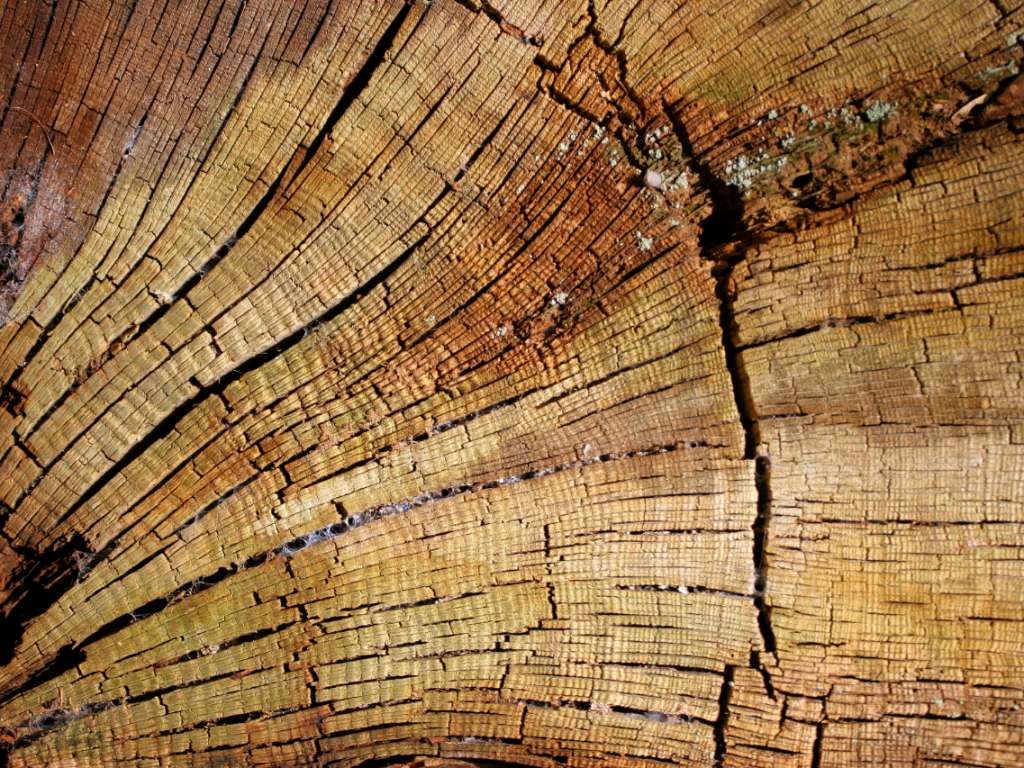
UArizona College of Science Laboratory of Tree-Ring Research
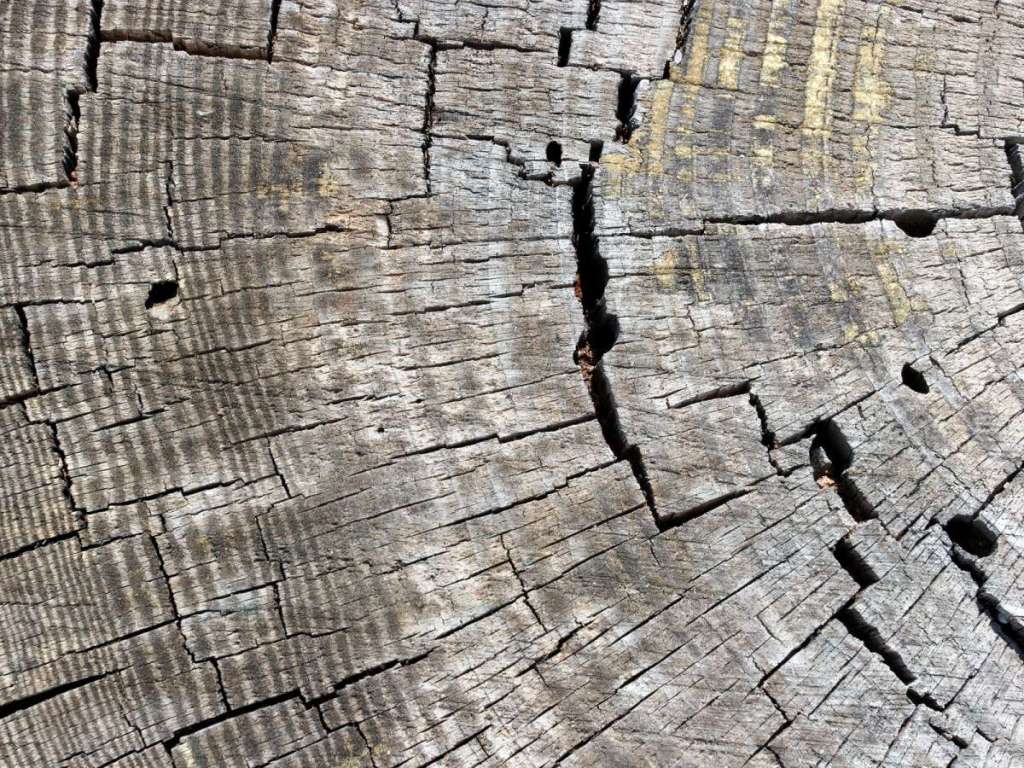
Climate Change
Tree Stories: How Tree Rings Reveal Extreme Weather Cycles
Tree Rings Aid Study of Climate Change and Weather Conditions
Dendroclimatology: Using Tree Rings to Reconstruct Past Climates
Benefits of Trees – As Wildlife Habitat
Working Trees for Wildlife
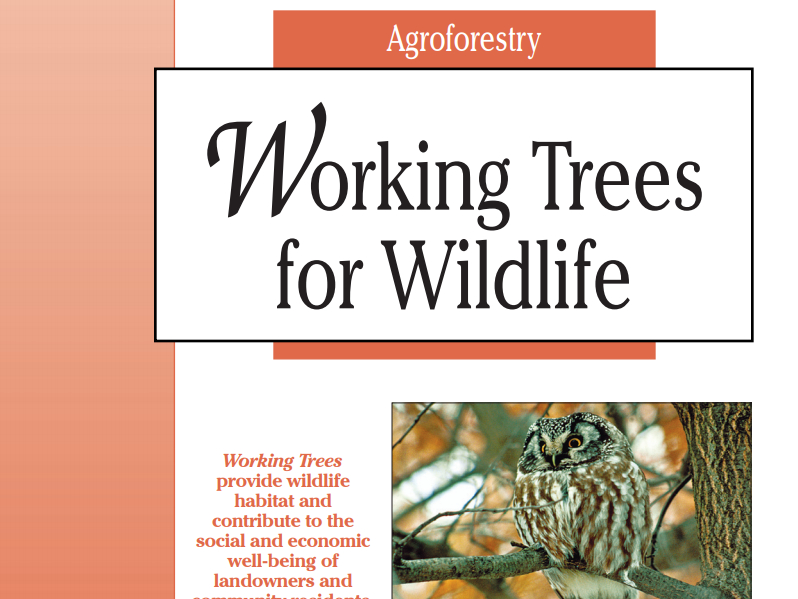
Plant Trees that Turn Your Yard Into a Bird Oasis
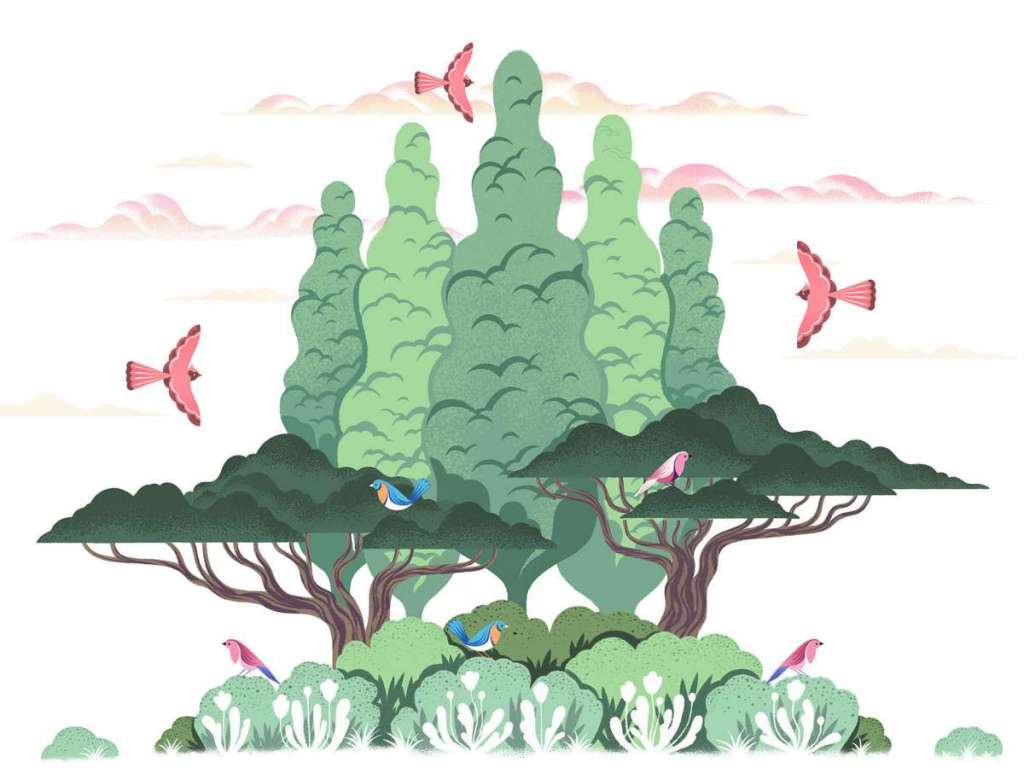
How to Make a Wildlife Tree

Retaining Trees for
Wildlife Habitat
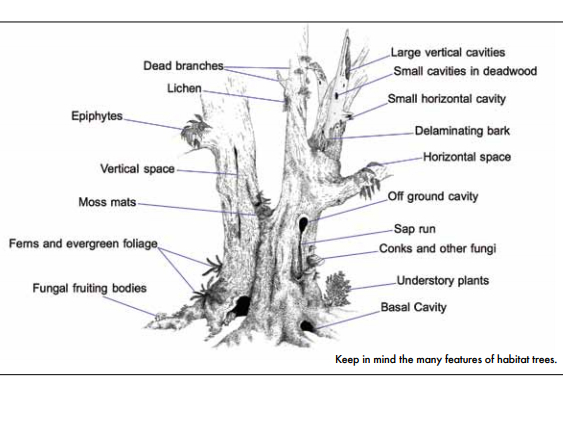
Free Books
The Hidden Life of Trees by Peter Wohlleben
Chapter One: Friendships
Chapter Two: The Language of Trees
[expand title=”SEE MORE” rel=”fiction”]
Chapter Three: Social Security
Chapter Four: Love
The First Book of Trees
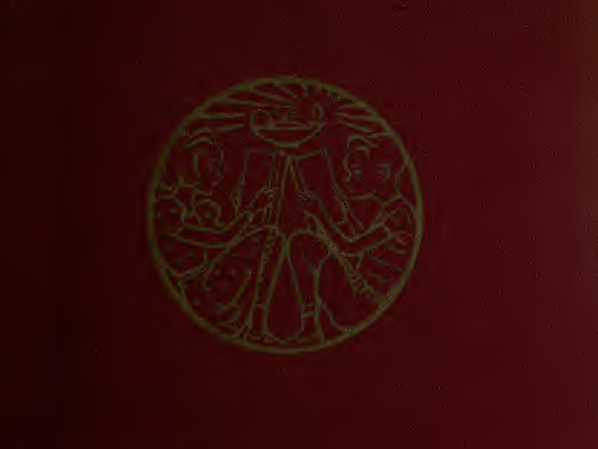
Trees Worth Knowing – 1923
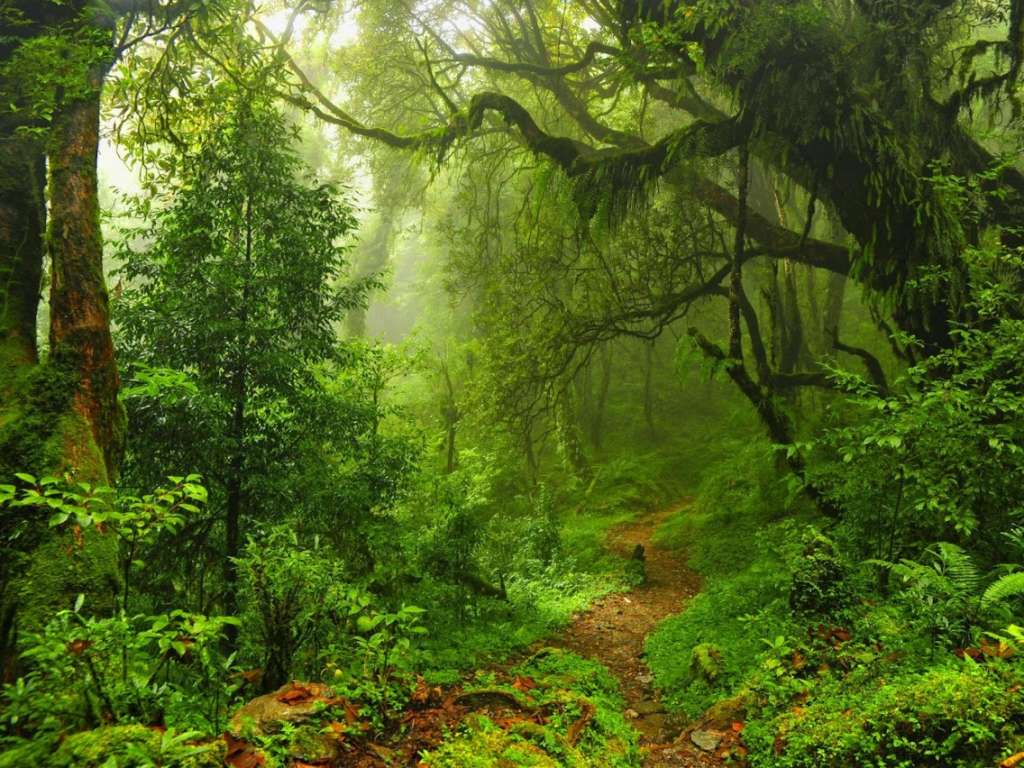
[/expand]
Day 2 – Taking Care
Wildfires
Fire on the Mountain – Bighorn Fire
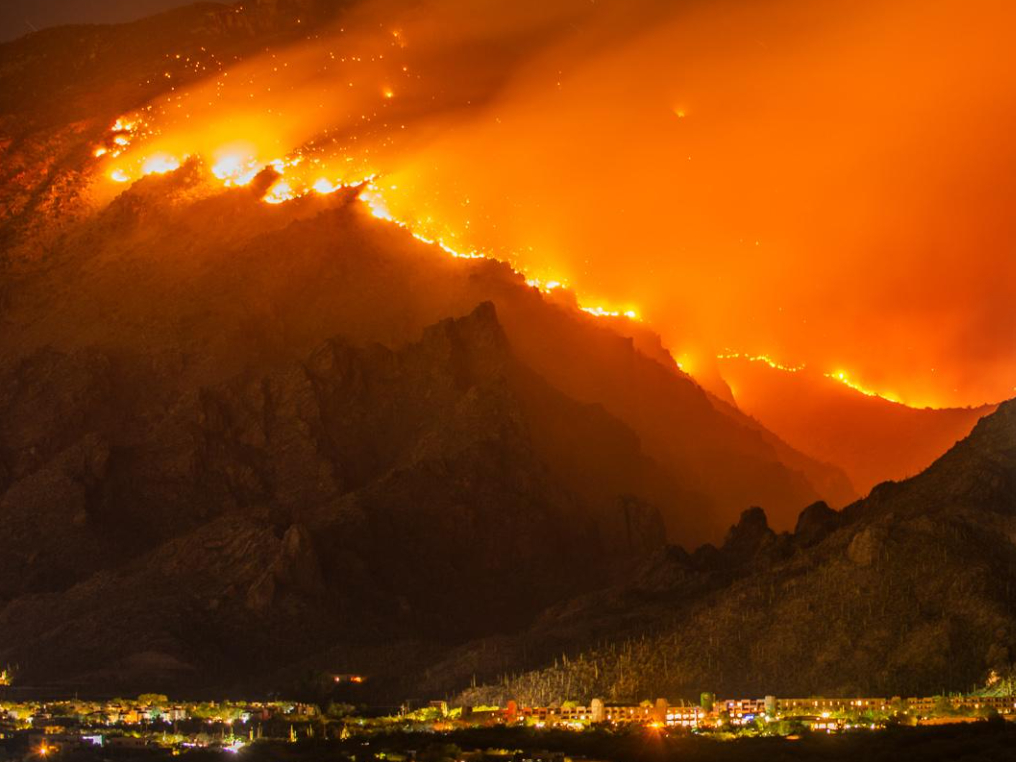
Fire Science
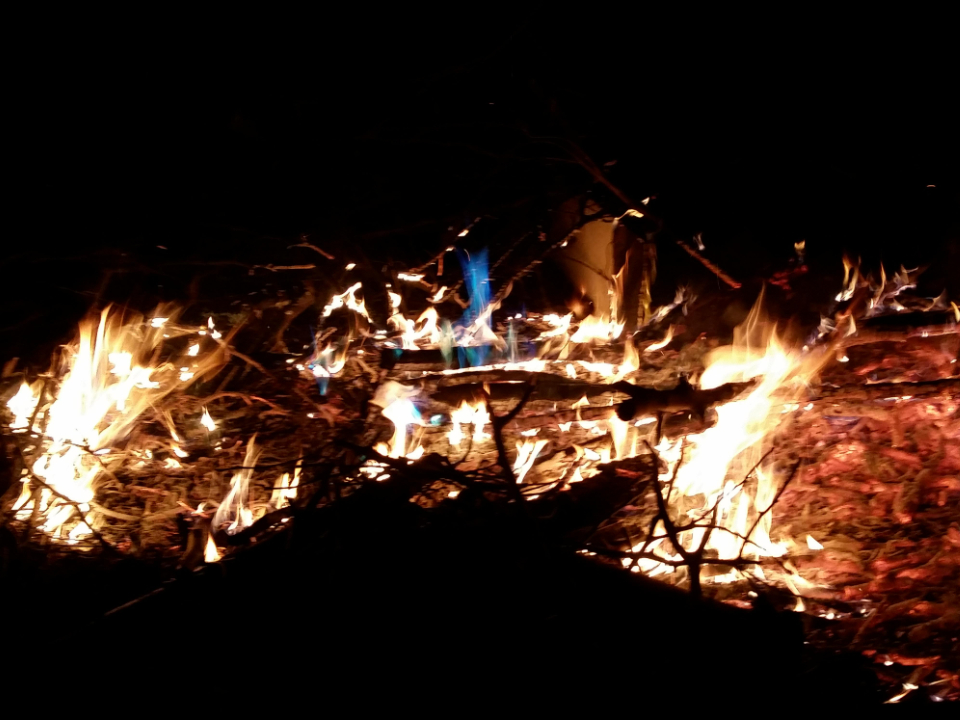
The Basics of Wildfires
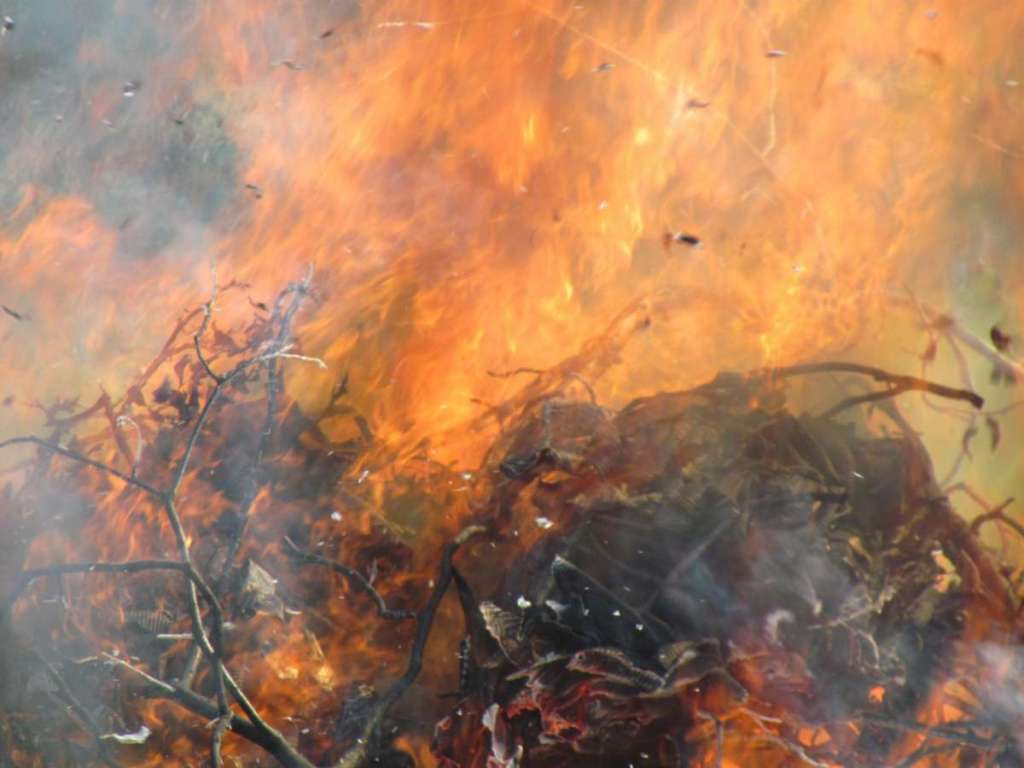
How wildfires get started—and how to stop them
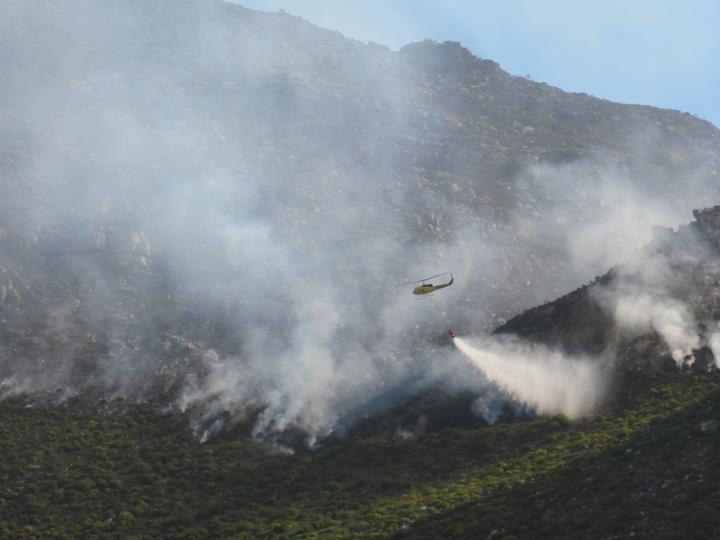
General Care
Care of Desert-Adapted Plants
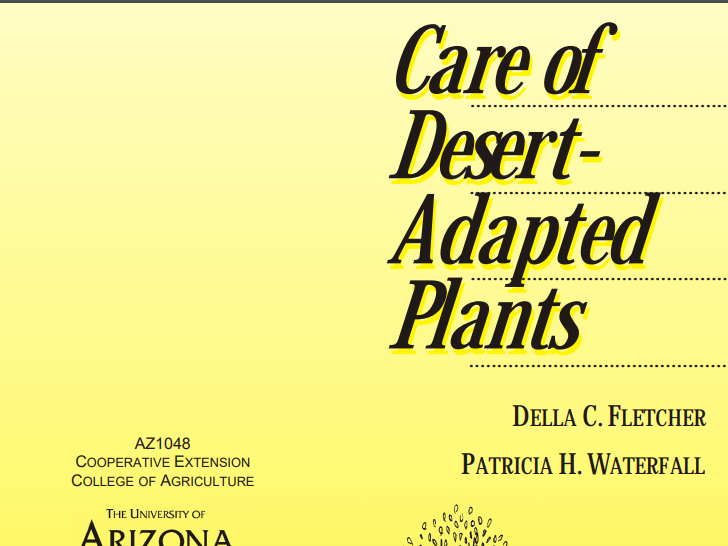
Tree Care Tips & Techniques

8 Tips To Help Your Trees Stand Up To The Weather
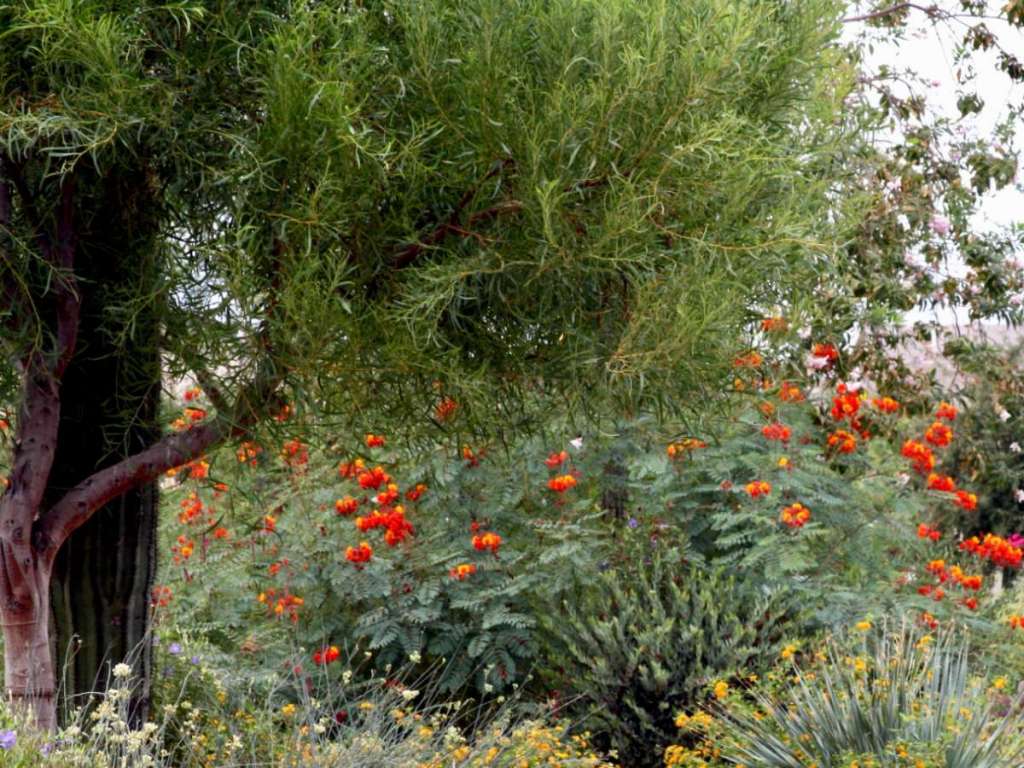
Tree Selection and Care
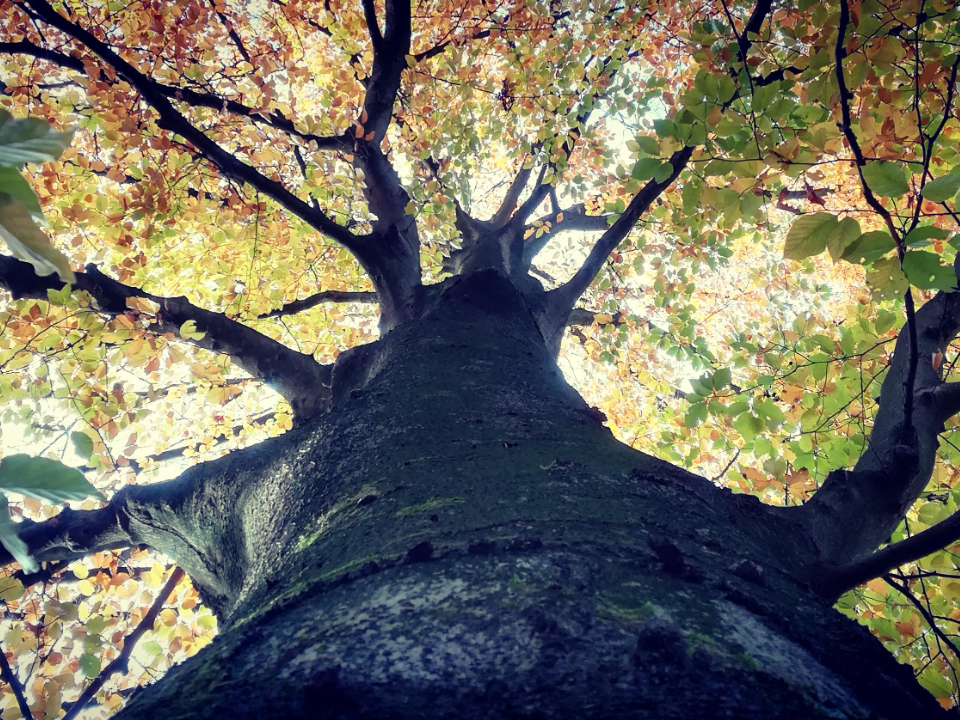
Pruning
Watering
A Guide to Pruning Native Sonoran-Desert Multi-Trunk Trees
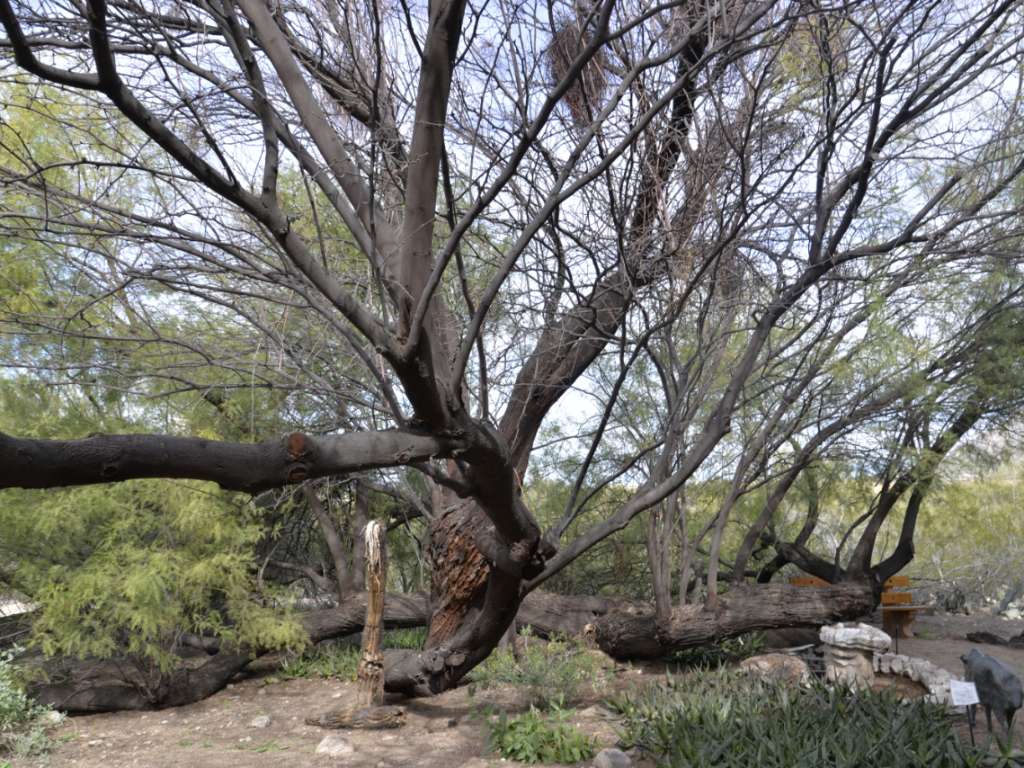
10 Pruning Tips To Healthier, Prettier Desert Trees
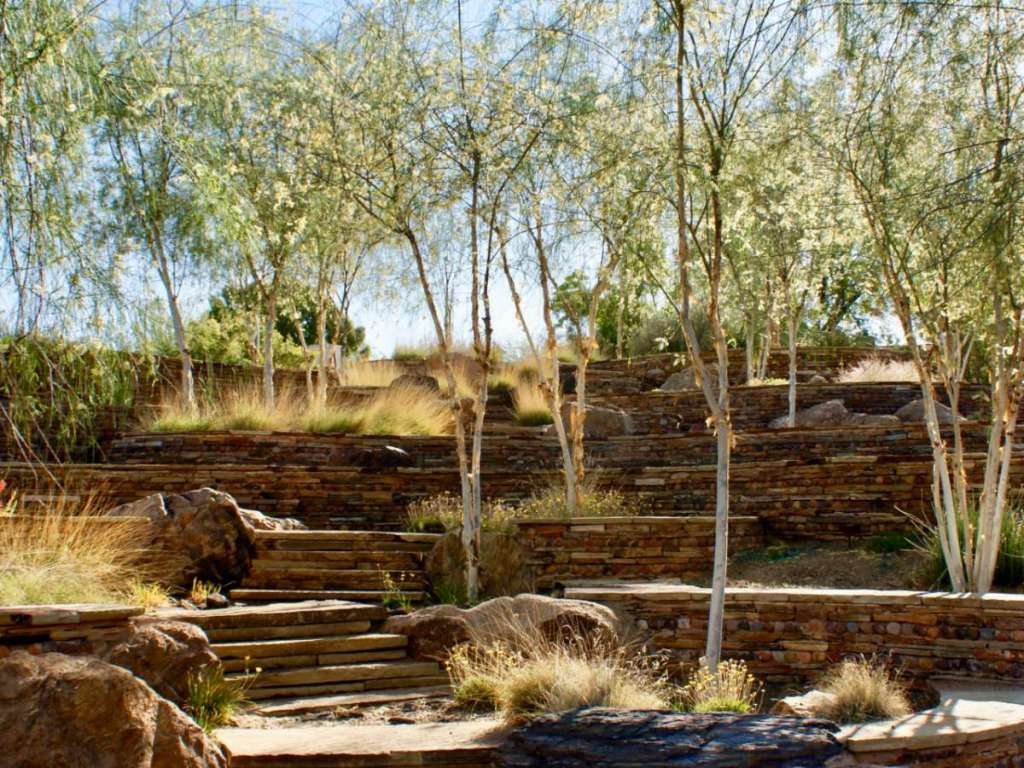
Water Use It Wisely – Plant Watering Guide

Resources
Arbor Foundation – The Time for Trees

Tree People – Top 22 Benefits of Trees
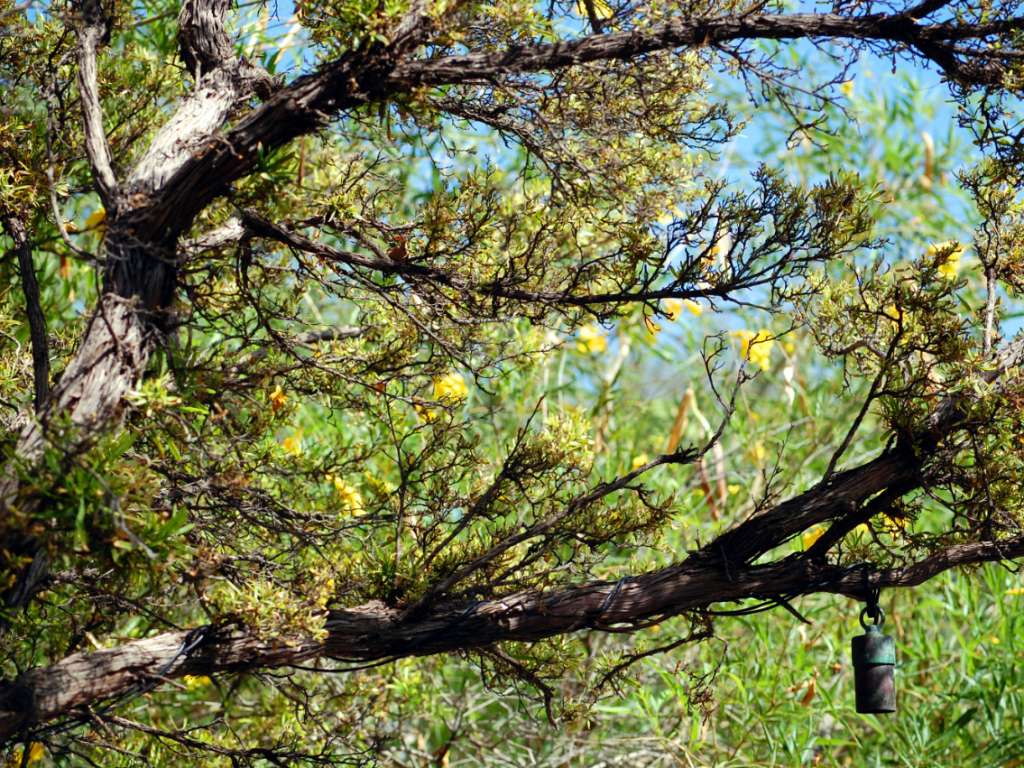
American Forests – Roots Run Deep
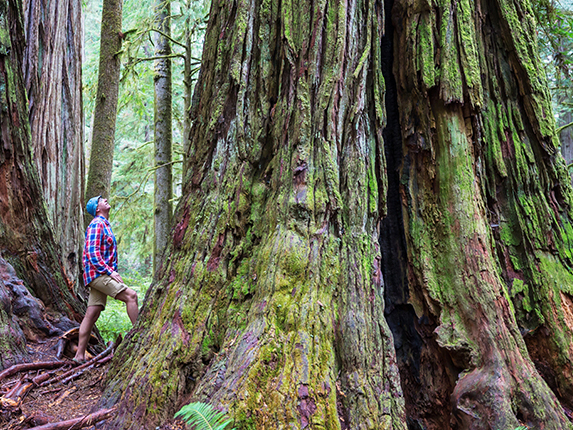
Arizona Urban Tree Map – Field Guide
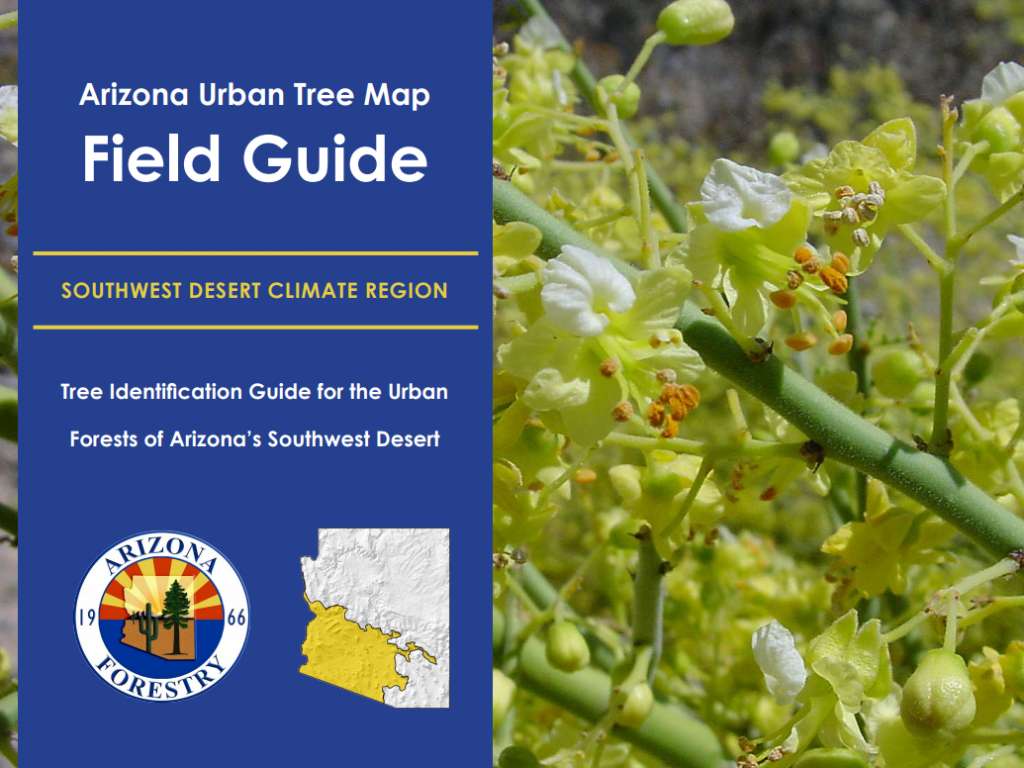
Activity Time
Carly’s Kids Corner – Digital Games
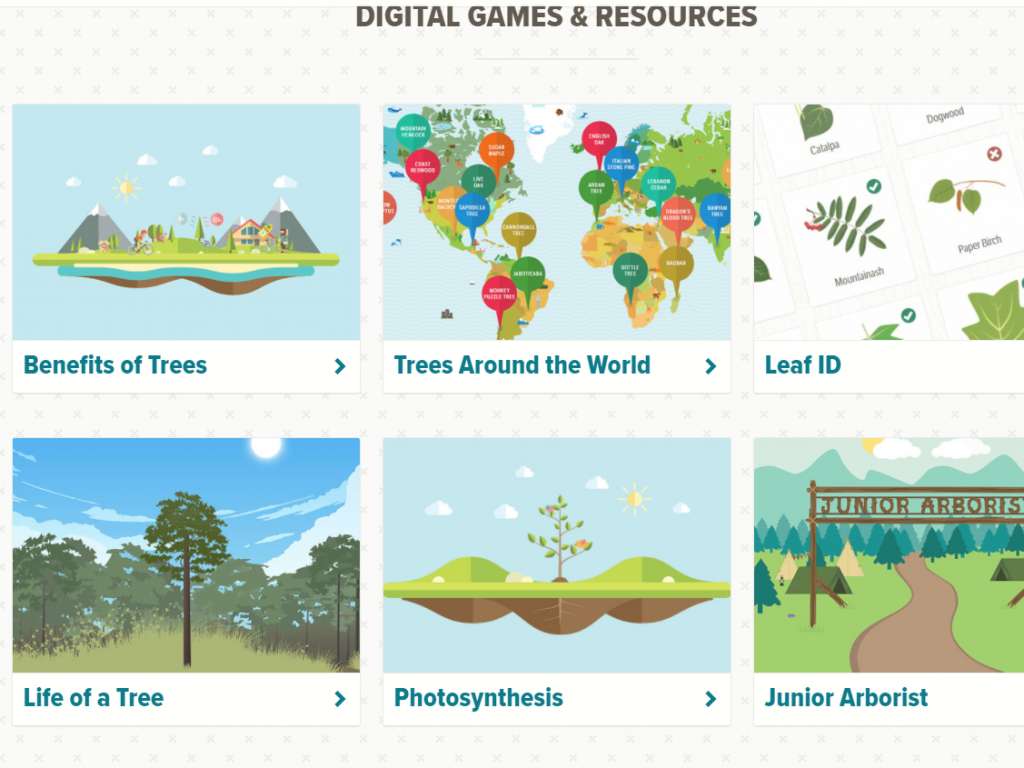
Tree-Ring Dating
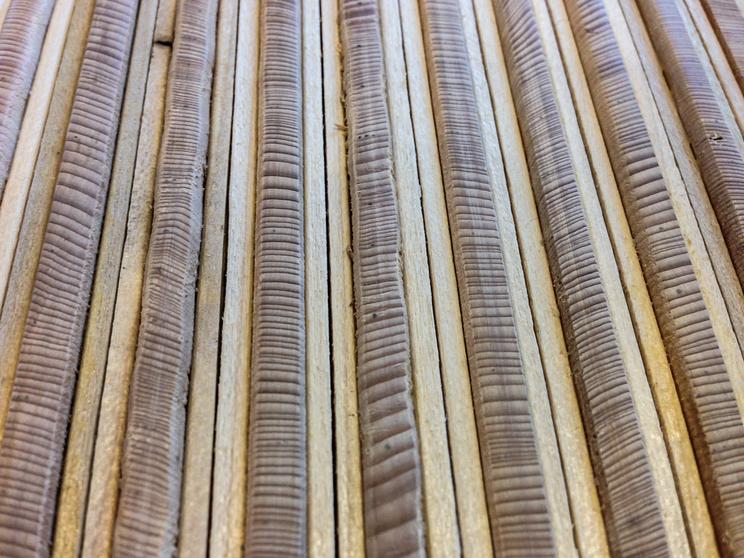
Tree Leaf Rubbings
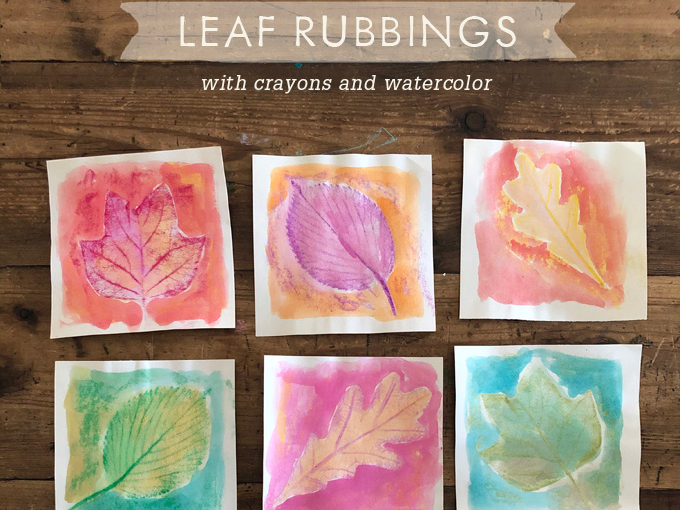
[expand title=”MORE ACTIVITIES” rel=”fiction”]
Life as a Tree! | Science for Kids
The World’s Tallest Tree! | Science for Kids
Guess That Tree! | Science for Kids
How Wildfires Help! | Science for Kids
How to Make Leaf Rubbing Art
[/expand]
Day 3 – Artistic Expression
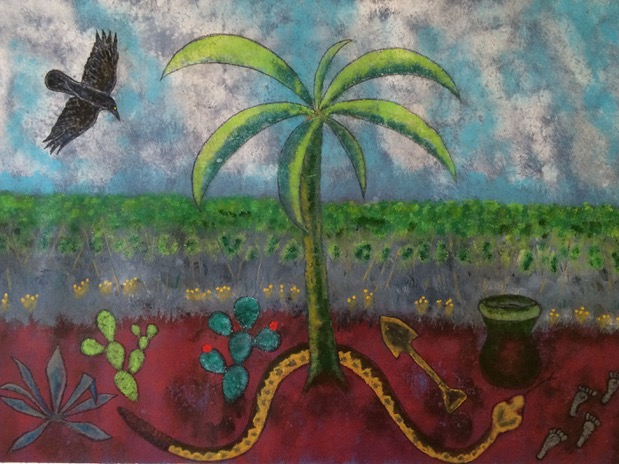
Download this week’s coloring sheets featuring Trees!
Get To Know The Artists
Janet Windsor
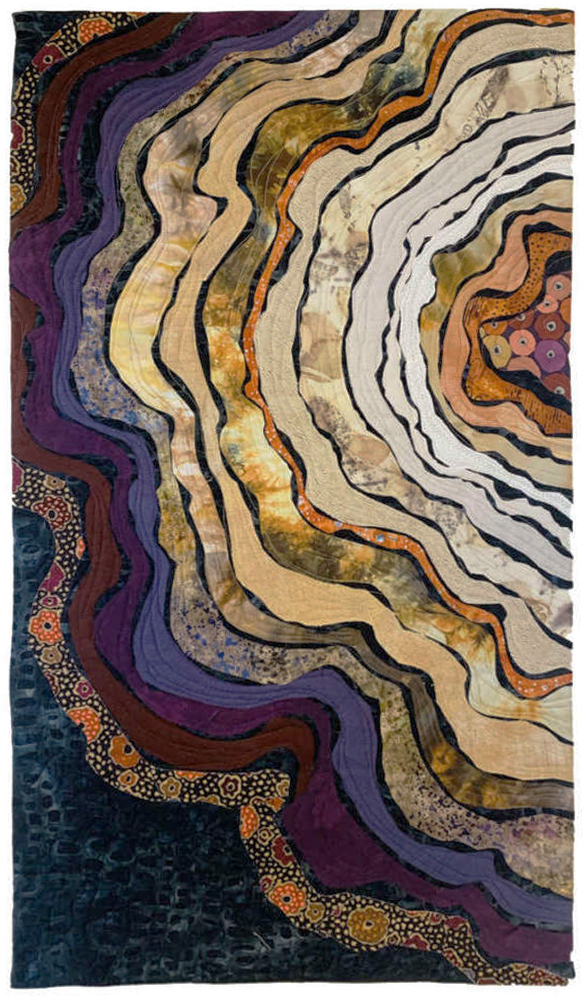
Burl
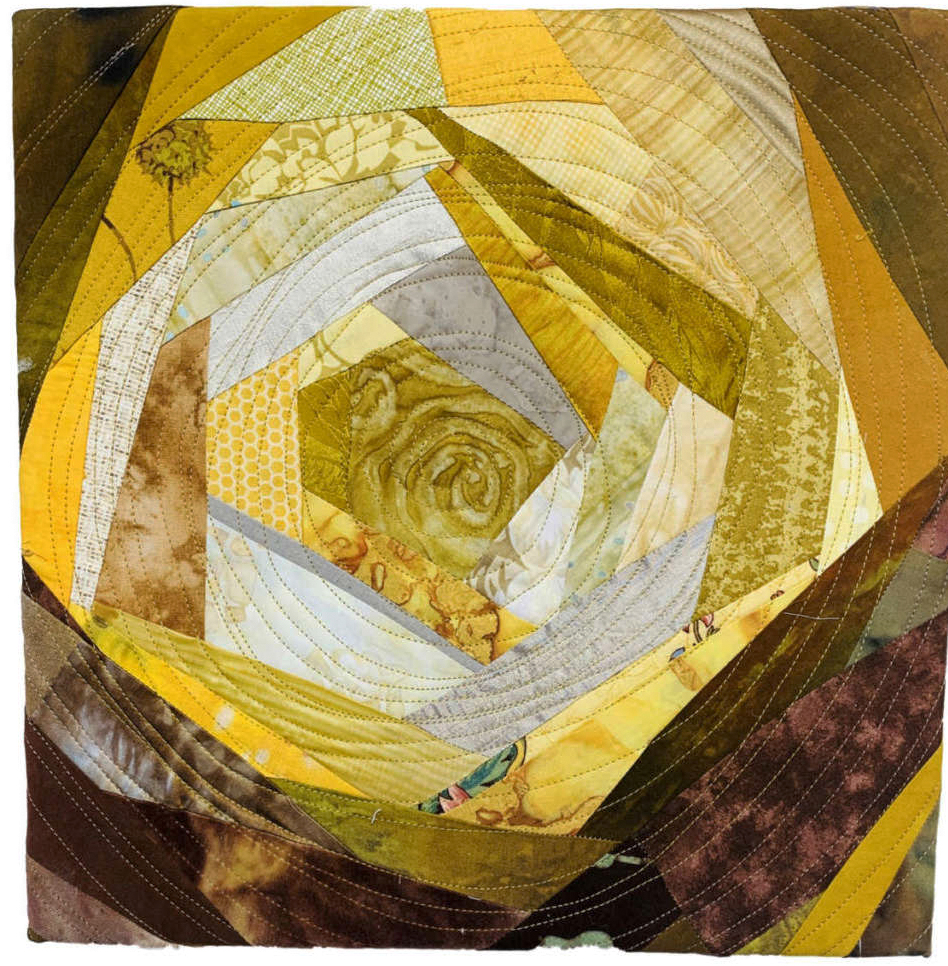
Riffing on Rings 1
“The trees in the Sonora Desert often appear stunted and dead, their forms twisted, the bark black, flaking and peeling. In the winter when the leaves have dropped, they truly look lifeless. However, when you look inside, a world of beauty is revealed.”
More
“I use the desert around me to inspire my works in fabric. The endless variation of color and form lends itself to abstraction in fiber. With this collection, I have branched out in new directions. I have used hand-dyeing, embroidery, applique; all of which have been used sparingly, if at all, in my previous work. I have used new materials including wool, tie-dyed velvet and linen, embroidery floss, and beads, the better to reveal that hidden beauty inside those dark twisted trees.”
SLICES OF SONORA is the third exhibition of the 2019-2020 Entry Gallery Project Space on view now in the Entry Gallery and online, https://tohonochul.org/galleries/entry-gallery/
To learn more about Janet and her work, visit http://www.janetwindsor.com/
Jennifer Eschedor
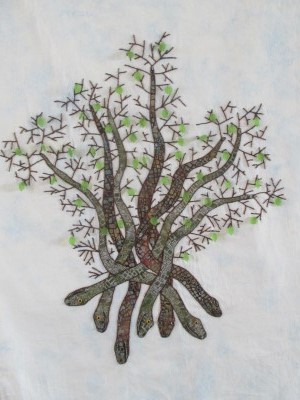
Survival
“This artwork is inspired by my experiences walking through the desert. On close inspection of plant life, I have discovered an unbelievable range of creatures
More
living in harmony with others because of their ability to camouflage. In addition to insects and birds, I have also witnessed a snake. Quite honestly, watching a snake winding itself around a tree branch and swinging limb to limb is one of the most unnerving experiences I have ever had.
When I read the prospectus for Sonoran Stories, I thought about mythology and folklore; how different cultures have explained a natural occurrence with a story. Inspired by my actual experience, I thought a whole tree made of snakes could explain the sensation of “bites” that occur when walking under many of the thorny tree species that survive in the desert. It seems every living thing in the desert is designed with its own attributes that help them to survive – being able to hide is just one of them.
I am intrigued by the relationships of creatures in the natural world. I like to compare and explore them with those of the human nature.”
“I have been working with fibers for over 35 years! Of all the processes I have tried, my favorite is to combine linocut printmaking with fabrics. In the past, I have used commercially produced fabrics and stamped text to create “quilt” like results. Most recently, I have enjoyed stitching and the dimension it creates.”
Jack McLain
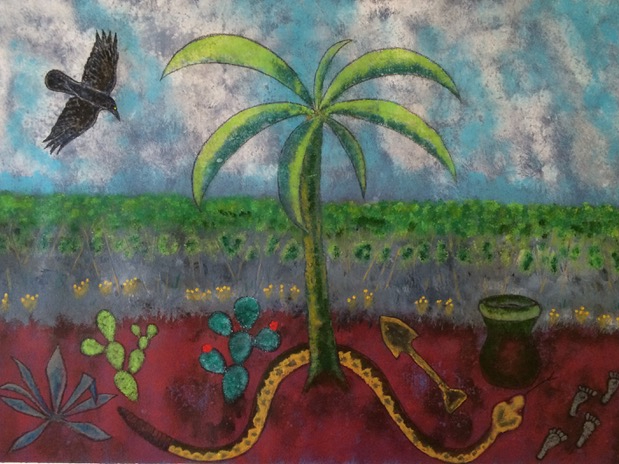
Happened in the Desert
“This painting was made in reaction to the many things seen and feelings had during the days I have spent wandering in the Sonoran Desert. I am intrigued by the desert’s ability, because of its fragility, of showing hints of things that happened a long time ago. The rusted implement, the spent cartridge, the pottery sherd, the sun bleached bones. The desert is inscrutable and vision inducing and unforgiving and inspirational. The desert does not encourage ambiguity.”
More
“Painting – and my favorite thing about it – allows creating my own light and forms. Painting allows expression limited only by my own skills and imagination. Painting is physical like dancing. Painting allows sloppy and drippy and finger prints. Painting is analogue, and painting can be colorful far beyond the natural.
I try not to overthink what is happening when I start a painting. I simply allow texture and random shapes and colors to take form with brushes or knives. This is the chaos stage. Making a story out of the chaos comes next.
Sometimes addressing the chaos results in pure form/color abstractions, sometimes quasi-figurative and sometimes allegory. At other times when traces of the old left-brain photo-formality rises to the surface the painting morphs into distinct geometric forms with no purpose but to be colorful with coherent orderliness.
I live in Tucson, Arizona, and certainly my colors and compositions are informed by the natural palette of the Sonoran Desert. My painting is no doubt further influenced by the funky pre-statehood historic neighborhood that I live in. Tucson is a very eclectic and groovy place with lots of one-of-a-kind creative people that have befriended me, inspire me, and help in my attempts to deserve the moniker “artist”. I owe my friends so much; they know who they are and I thank them.”
To learn more about Jack and his work, visit http://jackmclain.com/
Erinn Kennedy
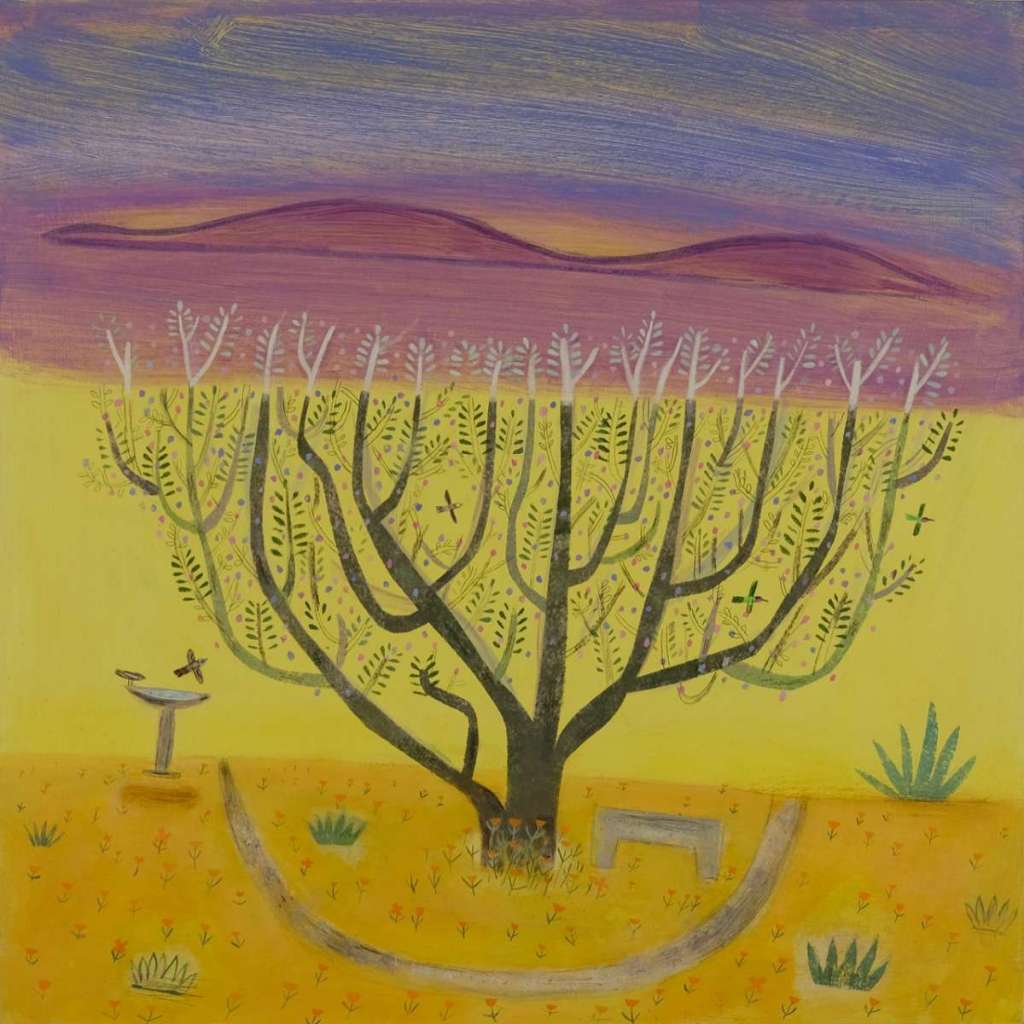
The Ironwood Tree
“I paint the objects and places that I love and are a part my everyday life. I find inspiration in the Sonoran Desert landscape in and around Tucson, Arizona where I live. I am very interested in its natural beauty, historic manmade structures, and stories left behind. I am equally interested in the atmosphere that surrounds these places and the moods they evoke.
More
When I see a still life arrangement or an outdoor scene that captures my attention I will make several sketches of it from observation, emphasizing spatial relationships, passages and colors that I find interesting or unexpected. When starting a painting I put these sketches away and work from memory and attempt to capture the beauty and essence of these engaging places and things.”
To learn more about Erinn Kennedy and her work, visit http://www.erinnkennedy.com/index.html
Day 4 – Artistic Interpretation
THE TREE: MYTH, SYMBOL, METAPHOR
The tree is necessary for all life, it nourishes and heals all creatures great and small. It provides shelter and shade as it produces air, water, food, and fuel. Whether majestic or withering, the tree conveys a psychological and emotional presence that is palpable; in the natural landscape it is relied upon as a marker of place and time. Humans easily anthropomorphize the tree: we both possess trunks, limbs and skin. Conversely, humans become tree-like when they put down roots, endure hard times, or branch out toward new horizons. Humans and trees share the life-cycle of birth, death, and re-birth. We are both storytellers; we both possess memory, wisdom, and bear the physical traces of our personal histories.
The tree is an integral character in myths. It is the origin of personal and universal symbols. It is a source of unique and meaningful metaphors. The artists featured in this section possess an intense respect and admiration for the tree. They have translated and idealized the tree in striking explorations of traditional and mythological themes, and distilled these explorations through the contemporary filter of personal experience – in turn, heightening our awareness of the surrounding world.

David Adix
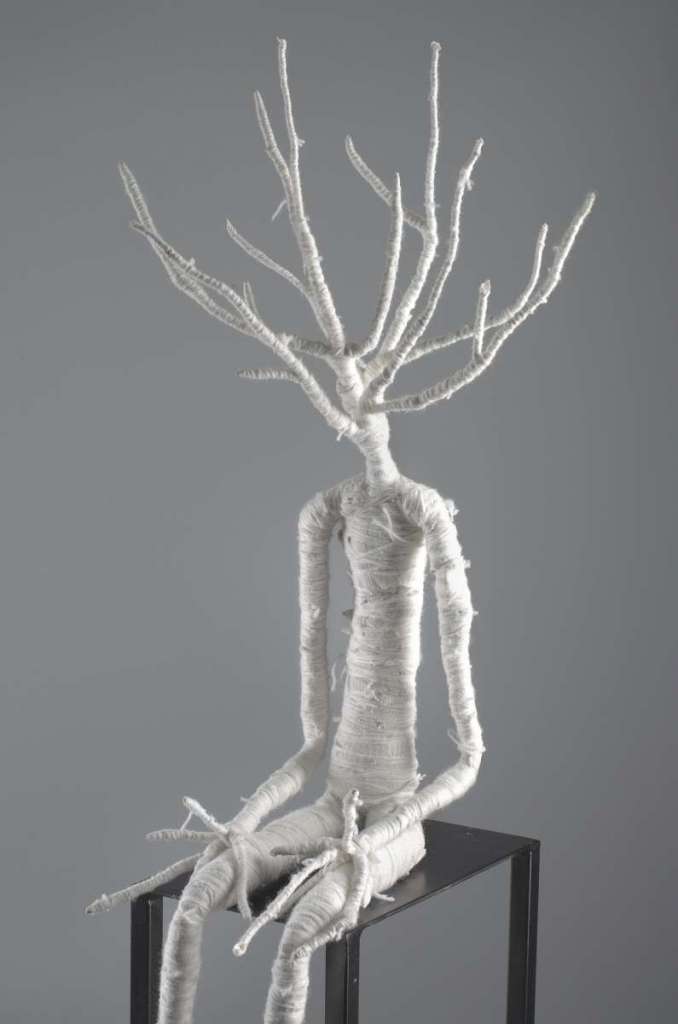
Winter’s Tree
“I grew up in the rocky mountains of Colorado and the tree was ever present in our lives: pine, conifer, cedar, juniper, spruce, aspen among
More
the many. As a kid the tree had many uses: climbing, hiding, tree houses, fences, and fire wood. Trees would catapult us into the world of adventure and were always available to help tell our story. The Ponderosa pine was the most majestic and exciting, climbing one of these great trees was like a portal to another place, another dimension and going up and up as high as you dare, you could escape from the world for a time… observe and watch without being seen…..the sap would give out its sticky scent in the summer, and in the fall when the snows came and throughout the winter these trees would burden the load. The Spruce was most significant at Christmas, as we often would find our way to a ranch and cut our tree for the season, gather pine boughs for wreaths and garlands. Now, as I have gotten older the tree has become an elemental object of design, among the many observations I love about a tree is looking up through the branches and finding patches of blue sky, like a Monet painting……..also the way branches tapper off into thin air……and so the tree will always be a source of fascination. ‘when I see birches bend to the left and right across the lines of straighter darker trees, I like to think some boy’s been swinging them’ from BIRCHES by Robert Frost.”
Rebecca Bish
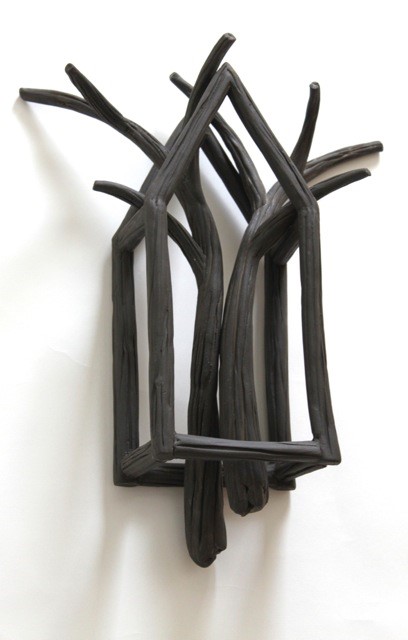
House with Two Branches
“I spent much of my early childhood playing beneath a large oak tree that grew in our back yard, arranging acorns and twigs within the massive,
More
gnarled root system that was exposed at the base of the tree. I’d wet and pack soil between the roots, sometimes embedding rocks, marbles, shells, or anything interesting that I could find lying around. My earliest creative impulses were nurtured here, below the sheltering canopy of this giant oak – and it was here that a lifelong obsession with trees was formed.
I have always been fascinated by the idea that there exists, underground, a mirror image of any tree seen on the landscape. I’ve imagined vast, subterranean forests, invisible to us and yet, no doubt, equally beautiful. Trees are, for me, powerful symbols of the beauty and mystery of nature – what is seen, what is hidden, what is known, what is unknowable.”
Catherine Nash
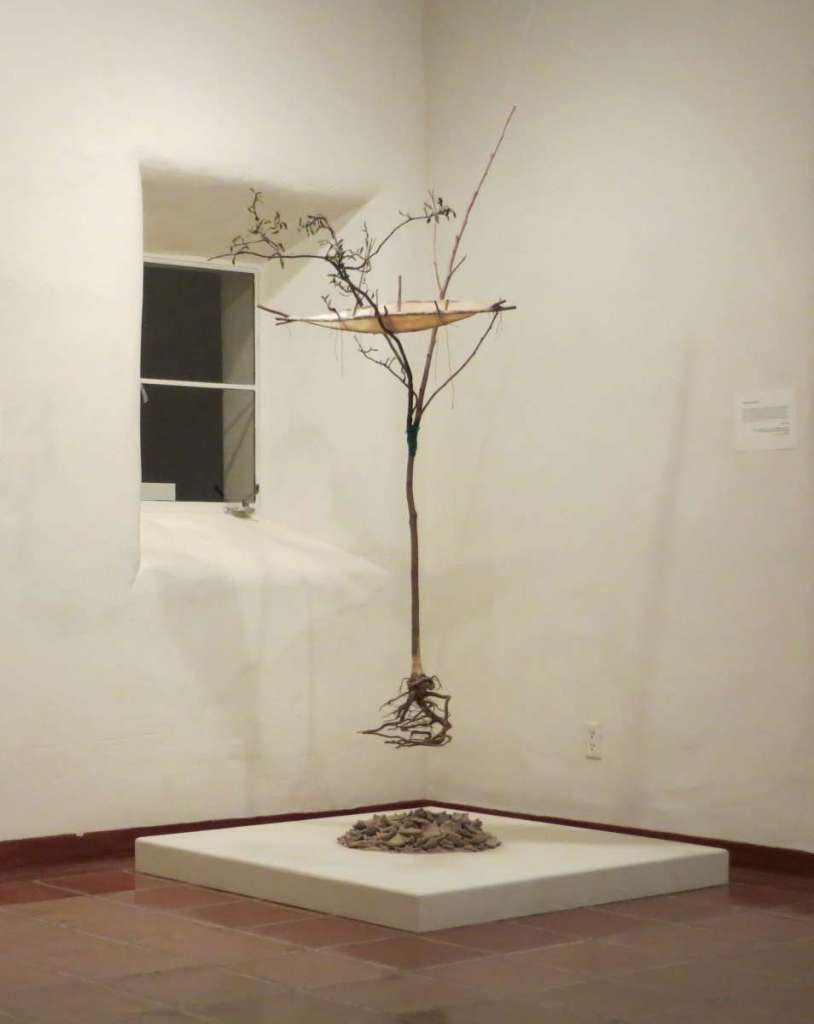
New Growth
“New Growth is a sculpture that has seen a metamorphosis through some years. Originally created in response to a devastating accident in which six tendons were scraped off the bone in
More
my right forearm, it became a personal missive of hope. Finding a dead tree in the Rillito River wash alongside some beautiful dried mud, I ‘grafted’ a branch from a different tree onto it, green leaves began to “sprout” from the foreign branch. This ‘new growth’ grew while roots were exposed above the dry earth. The tree flourished with an internal strength despite the conditions. At some point, a boat of dreamlike illumination took up residence within the branches, a vessel of light to be used as transport whenever needed.”
to learn more about Catherine Nash go to: http://catherinenash.com/
Stuart Ross Snider
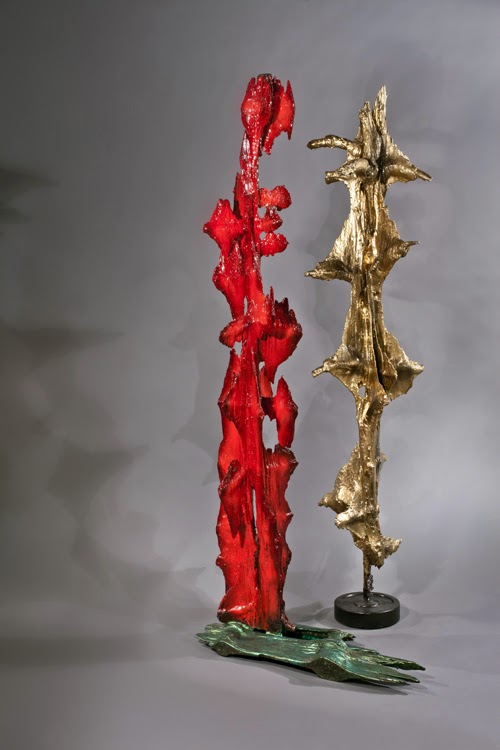
Redwing (right) and Mother Lode (left)
“There exists an invisible spirit in trees that reveals itself in objective form 10-50 years after it has been burned or died, fallen to the forest floor and the
More
outer bark and pulp layers have decayed away. My sculpture is a means of recovering the inner spirit of the tree, bringing it to life again, and revealing its extant artistic form and meaning. I harvest the nearly fossilized inner heartwood, so my work begins with the formal beauty of the tree’s inner core. I use hand and power tools, resin suspensions with mica, pigment and holographic powders, metal leaf and various enamel paints to develop multiple layers of reflective patina that is my means of preserving the life within the tree. The tree’s spiritual light scintillates anew in a resurrected life that is entirely different from the tree’s original physiological existence.”
[expand title=”MORE ARTISTS” rel=”fiction”]
Kate Long Hodges
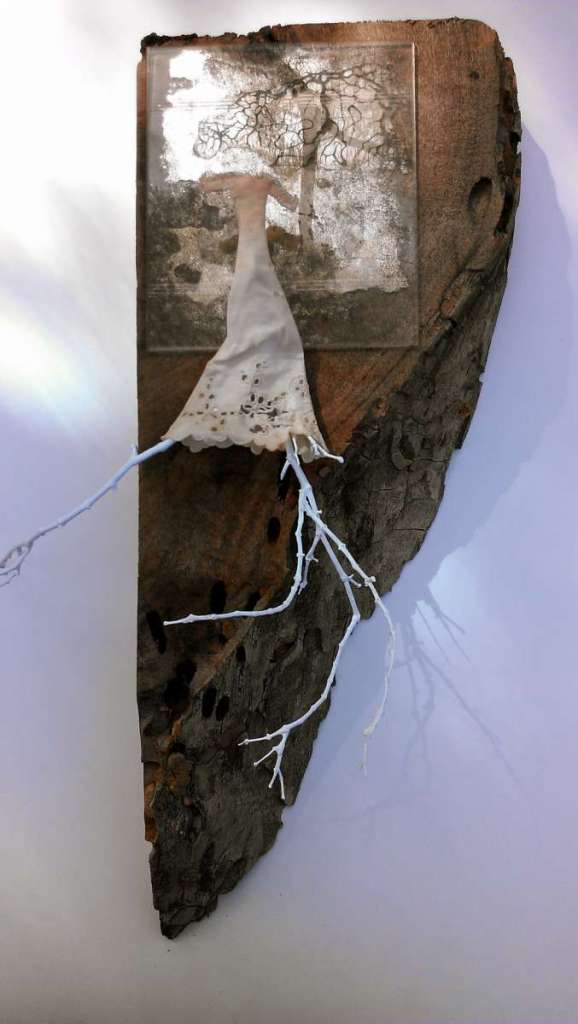
Sapling
“Trees provide role models for us: They ground down while simultaneously rising up. Falling, crashing, timbering, deteriorating, then rising up again. Such resilience. So still,
More
long lasting, yet temporary and transformative. They become rotting material that nurtures the new seed, for generations.
We begin with this same kind of resilience. A child falls with the sole purpose, of rising again. I make little flying dresses out of lace, thorns and tree roots, to celebrate our union with the earth, our small beginnings that come from a rich ancient past. Like trees, we weather many storms and become warriors, knights in armor standing tall, sharp-edged exteriors with soft interiors. Although these dresses are floating, they have roots, grounding down, even in times of uncertainty, when hovering over unstable ground. I no longer deny the thorns as a part of who I am. Yet underneath, lies a tender place.”
to learn more about Kate Long Hodges go to: https://thelandwithnoname.org/
Fannie Nockidineh
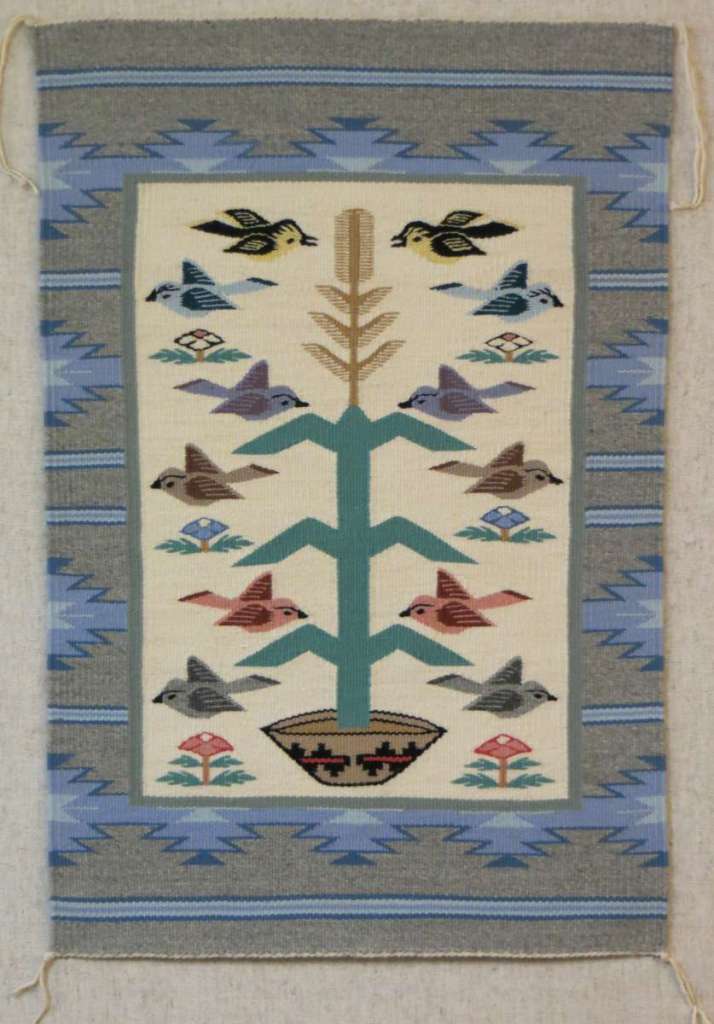
Navajo Tree of Life or Bird Pictorial
The Navajo Tree of Life pattern most likely derived from Navajo sand paintings. The design first began to appear in weaving around the turn of the 20th century and is commonly seen in Navajo weaving today. This piece illustrates a
More
typical Tree of Life design: a central corn stalk grows out of a Navajo wedding basket surrounded by birds in flight.
The Tree of Life motif ties to the Navajo Creation myth. The wedding basket symbolizes the center of all things. The black design on the basket represents sacred mountains. The corn stalk represents the reed which the Earth Surface People used to climb through worlds to finally emerge into our present world, known to the Navajo as the fifth world. The corn stalk can also be seen as a metaphor for where the Navajo came from and where they are going. Corn is extremely important to Navajo culture. Not only is it a source of nourishment, but it is also used in blessings and rituals. The Navajo people believe they originated from corn—men from white corn and women from yellow corn.
Not much is known about Fannie Nockidineh except that she was only 16-years-old when she completed this piece.
This textile is part of the Lu Lovell Collection which was generously donated to Tohono Chul by the Lura M. Lovell Trust in 2014.
Stu Jenks
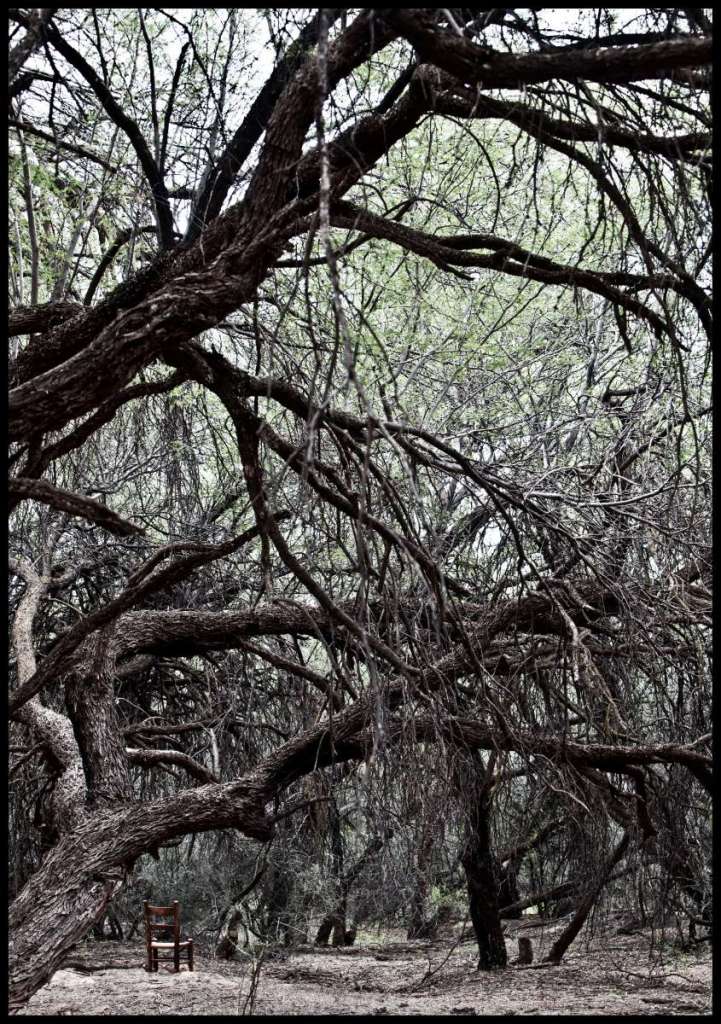
Pamela’s Baby Rocking Chair: Mesquite Bosque, 7B Ranch, Mammoth, Arizona
“Pamela Jenks, my only sister, died in 2011 of breast cancer at the age of 62. She was a virtual shut-in, only leaving her lonely, rundown house in Raleigh, North Carolina to buy food and drink, and to go to church on Sundays. Since her
More
death, I have taken my sister’s baby rocking chair to many places in the United States and Mexico. Regardless of the fact that the living Pamela Jenks would have been resistant to travel so far afield, the spirit of my sister now appears to enjoy these trips. At least, that’s what I think.”
to learn more about Stu Jenks and his Pamela’s Baby Rocking Chair series and book go to: https://stujenks.typepad.com/
Marcy Miranda Janes de Quintanilla
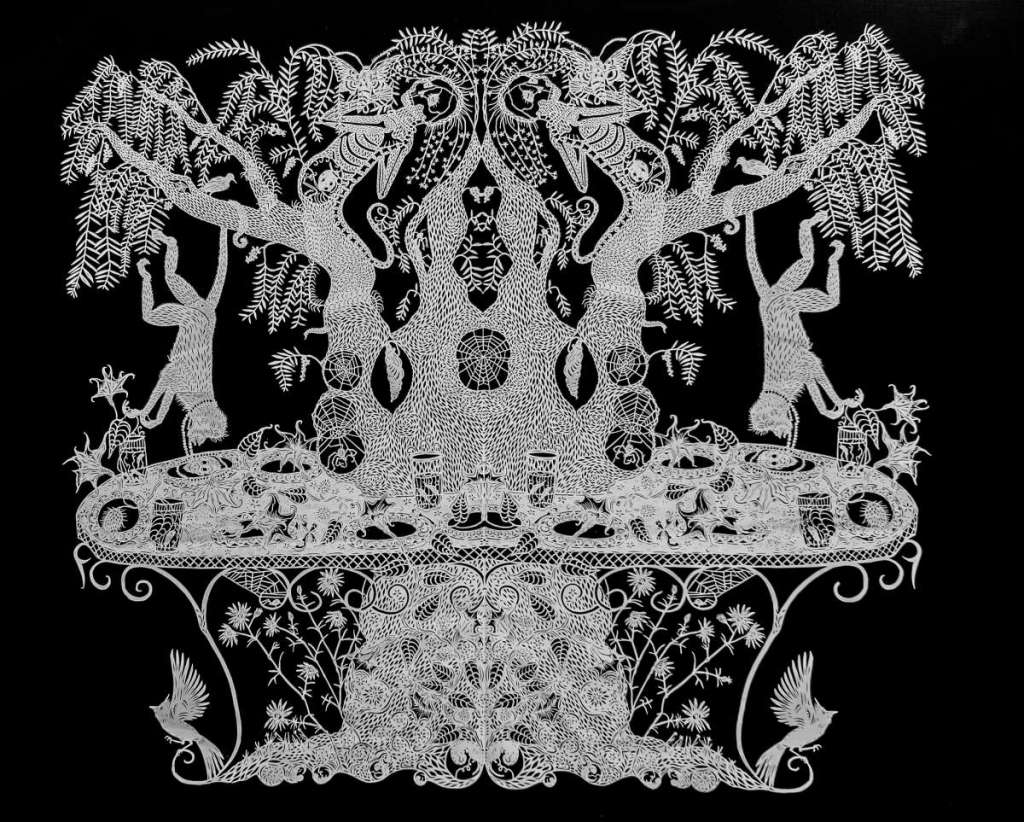
Pepper Tree
“The pieces in the Tohono Chul show The Tree: Myth, Symbol, and Metaphor relate to the idea of the tree as origin, the Tree of Life. I’m from Oregon, from the woods, and was practically raised by the trees. They are
More
ubiquitous, full of both life and shadow, filling the air with their rustling and scents, coloring the gray Winter, and signaling both Spring and Fall. The tree pieces bear symbols of life and death, of life cycles, from the ancient to the budding and new. The Pepper Tree piece has the table laid for a banquet, with glasses swimming with polywogs, and plates of floripondio.”
Trish Hastings Sargent
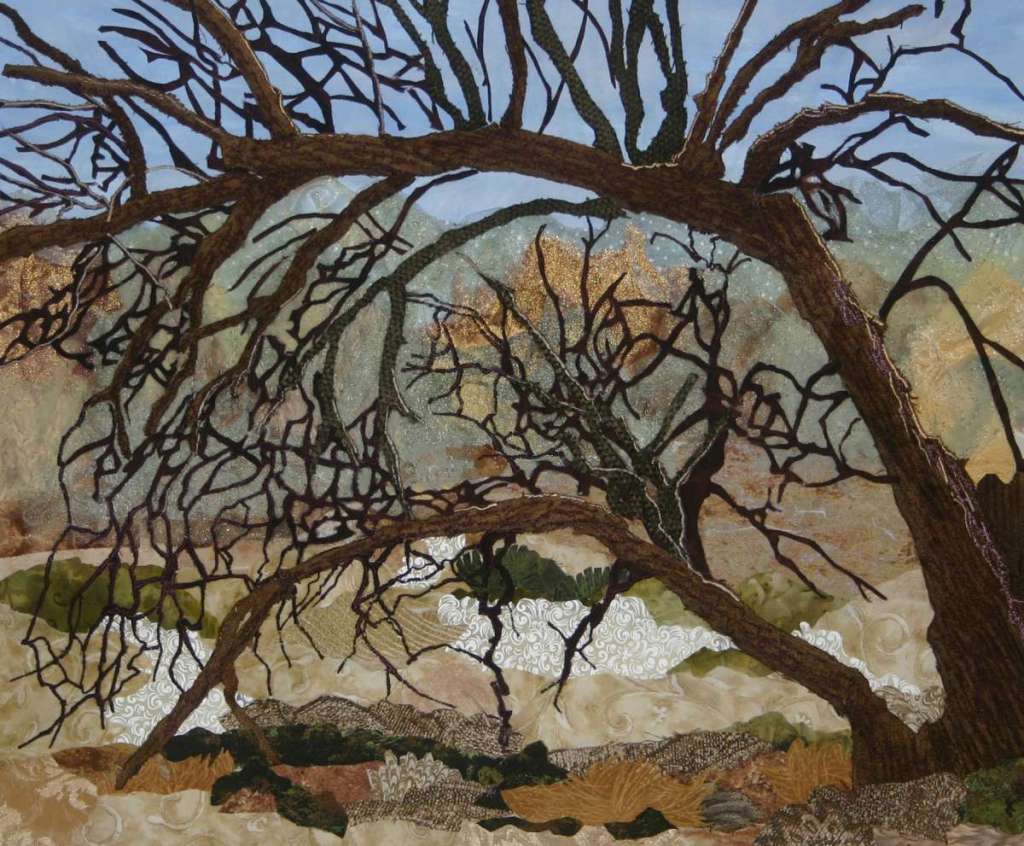
A Mesquite in Spring
“I have been fascinated by the mesquite trees that grow in my yard. Their low hanging branches that touch the ground create a shade canopy that is so inviting. Even in winter, when there are no leaves
More
on the tree, this canopy still exists. In spring, when the flowers begin to bloom and new leaves begin to appear, under this shade canopy becomes a magical place.”
to learn more about Trish Hastings Sargent go to: http://www.ths-studio.com/
Roger Asay & Rebecca Davis
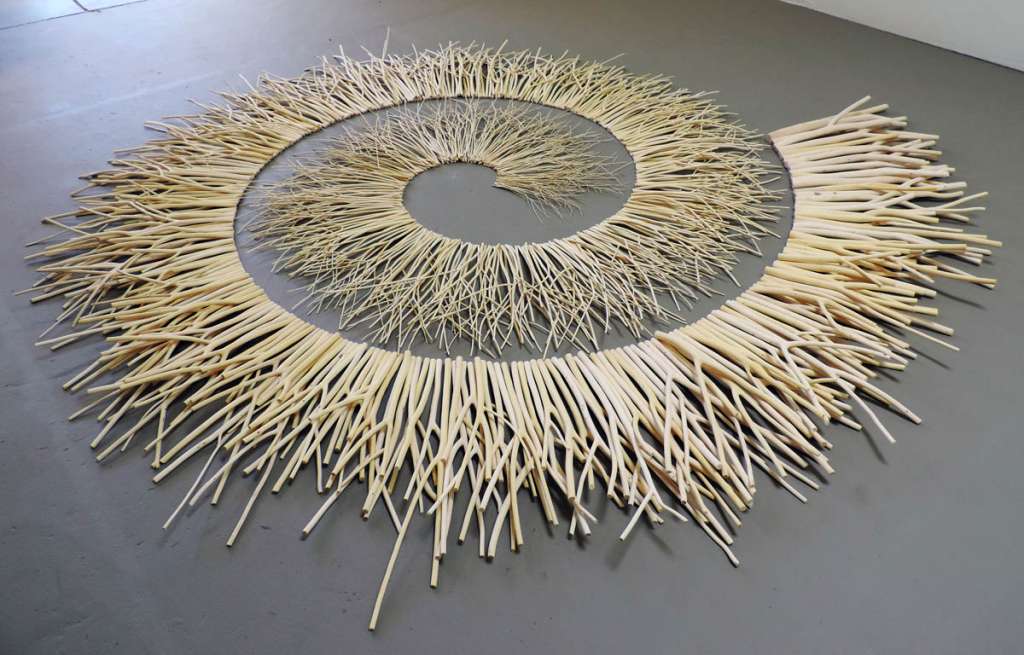
Elm Stick Spiral
Like much of our collaborative sculpture, Elm Stick Spiral is an installation piece that focuses on a specific natural material. In this case we have collected forked elm branches found near our Prescott home, peeled them, sanded them and arrange them to bring out their form
More
and beauty. Their simple, abstract spiral configuration sets off the organic complexity of the sticks at the same time that it unifies them and gives them a clear focus. Because these sticks are not fastened in place, each time we show this piece it must be set up anew. It will always be fresh, fragile and immediately present, a visual feast of texture and pattern to please the senses and engage the mind.”
to learn more about ROGER ASAY and REBECCA DAVIS o to: http://asaydavisstudios.com/
SLICES OF SONORA
Janet Windsor
David Windsor
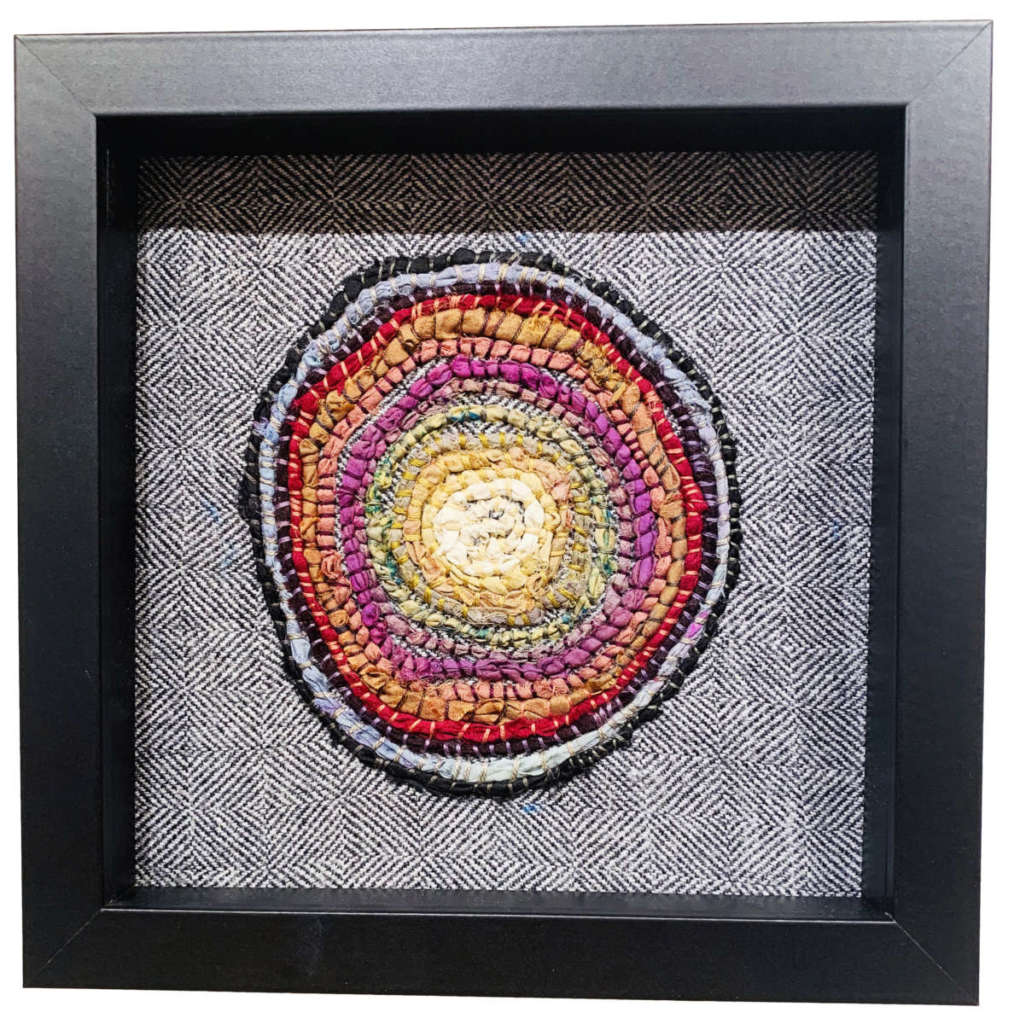
Slices 4
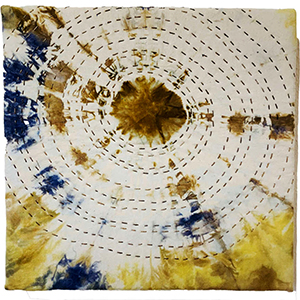
Riffing 3
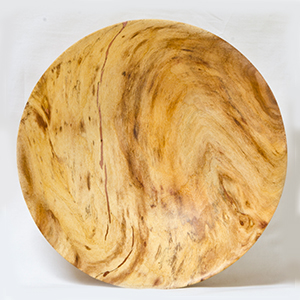
Mesquite Mistletoe Gall Bowl
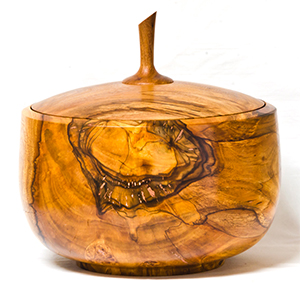
Arizona Ash Lidded Vessel
The trees in the Sonora Desert often appear stunted and dead, their forms twisted, the bark black, flaking and peeling. In the winter when the leaves have dropped, they truly look lifeless. However, when you look inside, a world of beauty is revealed. David and Janet present the inside beauty in polished and turned wood and fabric abstractions. The natural world of our desert home is their inspiration and the source of their raw materials.
More
“I consider my turned pieces usable art. The raw materials for my pieces are trees salvaged from Tucson and the surrounding desert. The challenged growing conditions often result in wood with striking grain patterns. Other features I take advantage of are knots, bark inclusions, sapwood and wormholes. For each piece, I strive to choose a form that best takes advantage of the grain and features and then use a variety of inlay materials to fill voids. Each of technique is used to take advantage of the unique characteristics of these fascinating desert woods.”
“I use the desert around me to inspire my works in fabric. The endless variation of color and form lends itself to abstraction in fiber. With this collection, I have branched out in new directions. I have used hand-dyeing, embroidery, applique; all of which have been used sparingly, if at all, in my previous work. I have used new materials including wool, tie-dyed velvet and linen, embroidery floss, beads; the better to reveal that hidden beauty inside those dark twisted trees.”
to see all the artwork from SLICES OF SONORA currently on view at Tohono Chul go to: https://tohonochul.org/galleries/entry-gallery/
To learn more about Janet Windsor and David Windsor go to: http://www.janetwindsor.com/ and http://davidwindsorsstudio.com/
[/expand]
Artists and Trees, In Arizona
Fires of Change by Bryan David Griffith
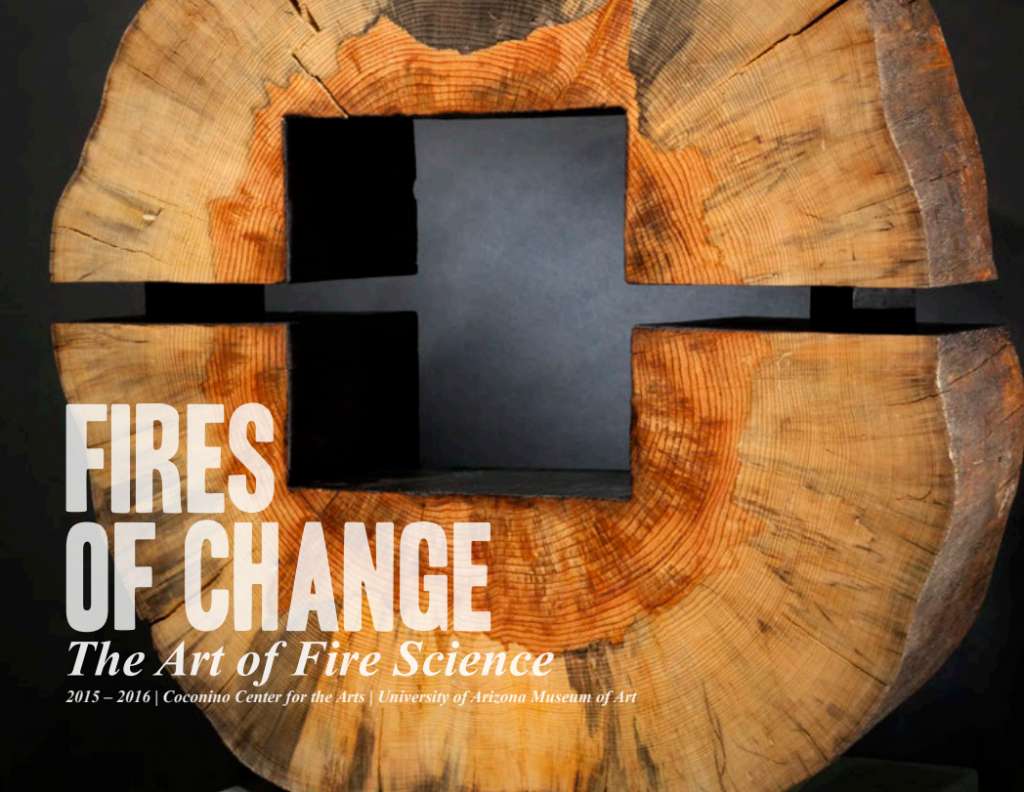
Fires of Change – A Science & Art Collaborative
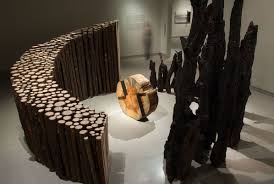
to learn more about Bryan David Griffith go to: https://www.bryandavidgriffith.com/
Art in the Bryant Bannister Tree-Ring Building
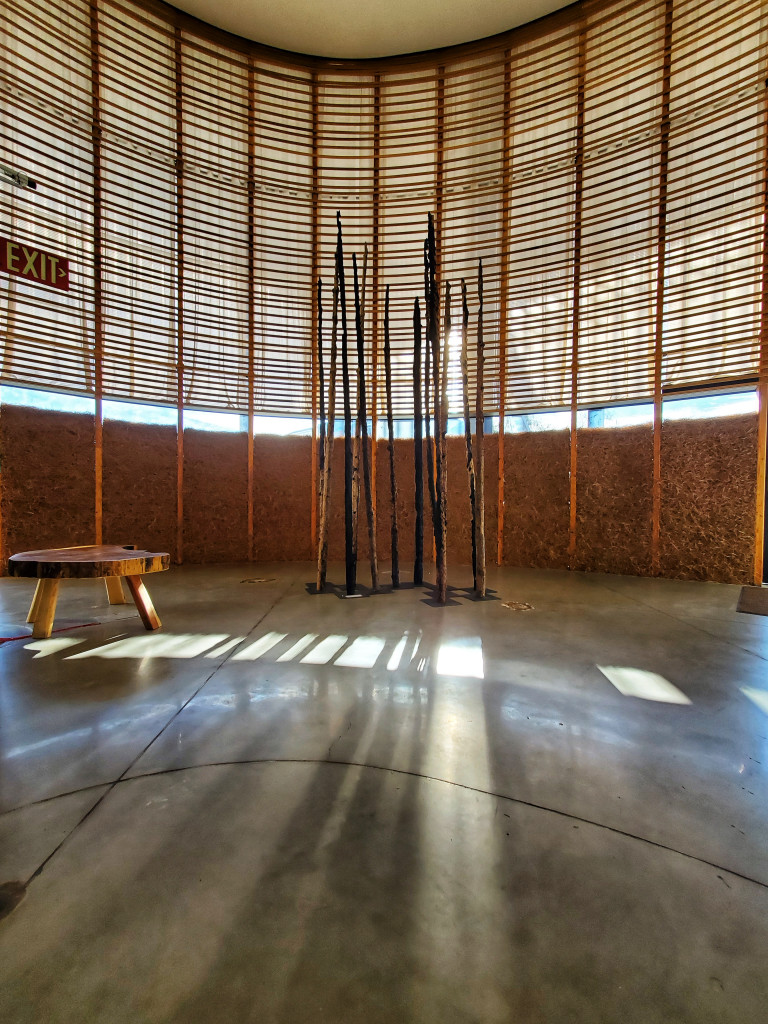
“For the past twenty years, the forest has become my studio, not as subject matter to draw or paint, but for discovery, observation and the collection of the materials that are the basis of my art. Each spring, I have knelt under the pines collecting the peeled twigs that Abert squirrels gnaw on and then drop as litter onto the forest floor below. I like to believe that the trees I work under remember who I am. I like to believe that they remember me as I enter their home, arms embracing acceptance to come listen and learn. More recently, as I have begun collecting materials in burnt forests, my aesthetic has changed. I now find such forests to be more beautiful than the dark dense forests of monotonous green. Fire creates openings to see the contours of topography, of form and horizon, the hollowed-ground of what once stood. There is a beauty to the death and eventual resurrection to come.”

UArizona College of
Science Laboratory
of Tree-Ring Research
Artists and Trees, From Across the Globe
Bryan Nash Gill
“The logs that I cut and split and used for heating my house and studio, or for building a fence, were also perfect for printing. They were beautiful in their own right. . . . This tree was planted by the founders of the Pequot Library in Southport, Connecticut, over a hundred years ago and was harvested in 2009. In this print, the even spacing of annual rings is indicative of a consistent growth environment.”
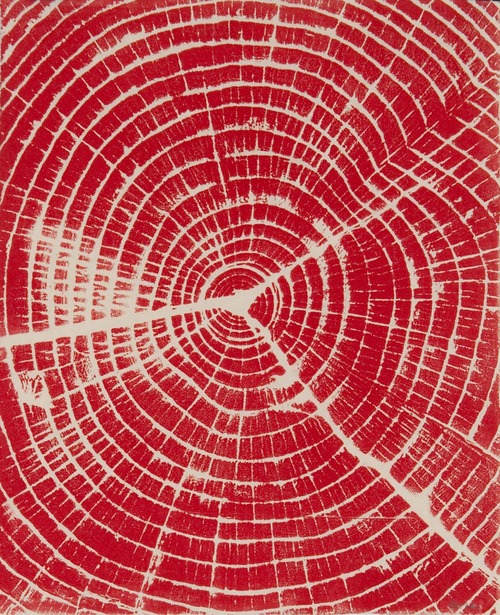
“Woodcut” Book by Bryan Nash Gill
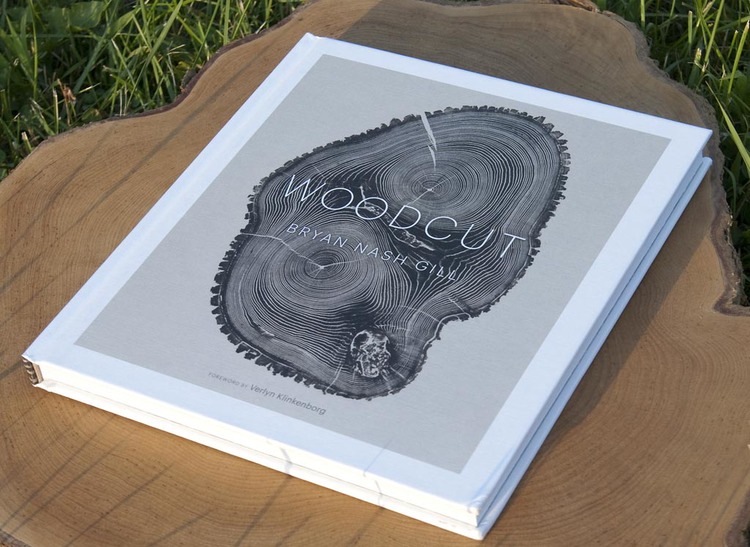
David Nash
“The world of nature, the environment, weather, time and space is so rich, you have to engage with it”
David Nash: 200 Seasons
David Nash: A Conversation
Giuseppe Penone
“I feel forest breathing/and hear the inexorable growth of the wood… I match my breathing to that of the green world around me. I feel the flow of the tree around my hand/ placed against the trunk. The altered sense of time makes what is solid, liquid, and what is liquid, solid.”
Giuseppe Penone: A Tree in the Wood
Metaphysical Conversations with Nature
Day 5 – Weekend Inspiration
We’ve learned all week how amazing trees actually are! And even though we are in the desert there are plenty of trees around. Check out Project Learning Tree to learn more about our giant leafy friends.
Project Learning Tree
Poet-Tree

Tree Factory

What’s The Value of That Tree?
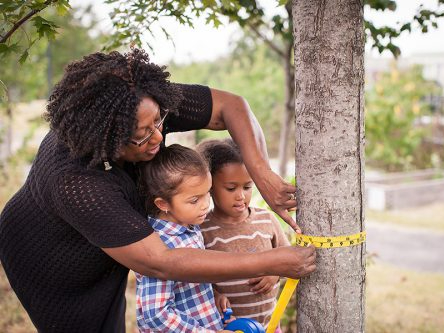
Trees as Habitats
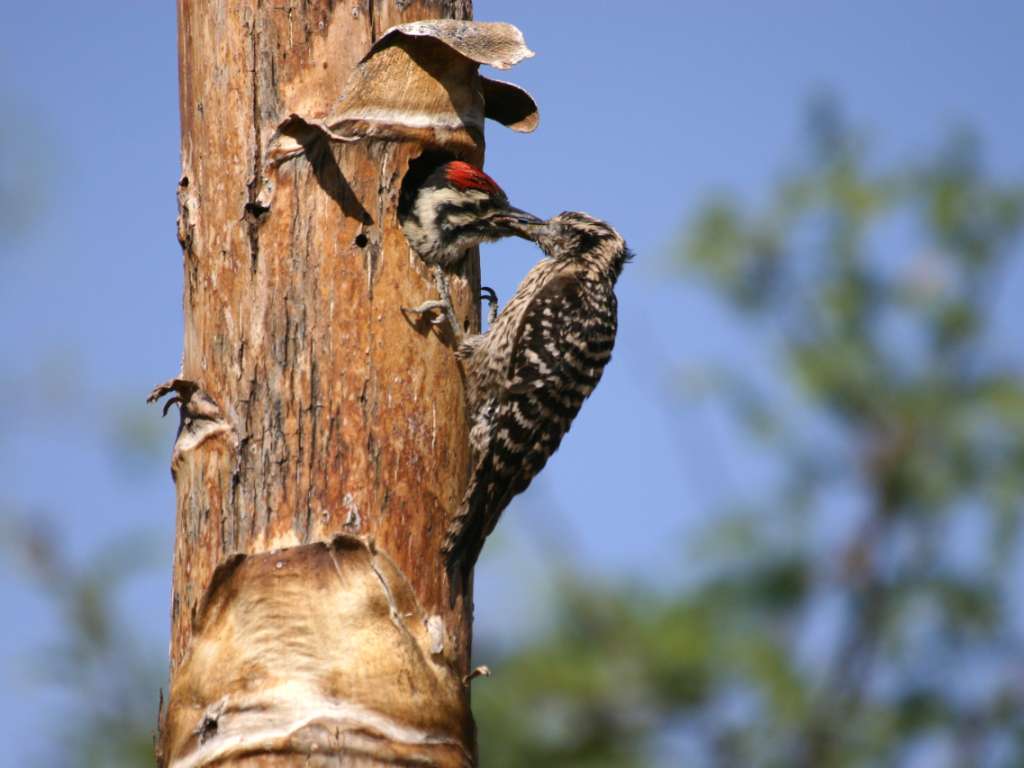
Activities for Families
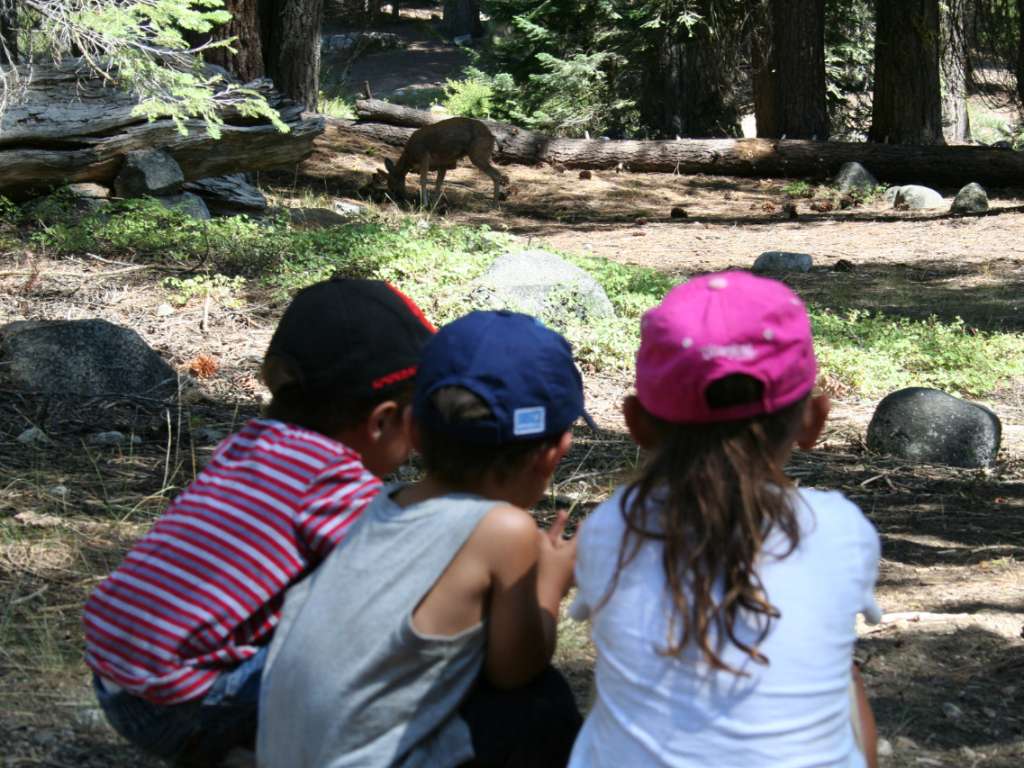
Next Week’s Theme

